
Lunar Module – Definition & Detailed Explanation – Space Exploration Glossary
Table of Contents
What is a Lunar Module?
A Lunar Module, also known as a LEM (Lunar Excursion Module), is a spacecraft designed to land on the moon and return to the mother ship orbiting above. It is a crucial component of manned lunar missions, allowing astronauts to safely descend to the lunar surface and then return to the command module for the journey back to Earth.
How does a Lunar Module work?
A Lunar Module is comprised of two main parts: the descent stage and the ascent stage. The descent stage contains the landing gear, engines, and fuel needed to safely land on the moon. Once on the surface, the descent stage is jettisoned, and the ascent stage, which contains the crew cabin, ascent engine, and fuel for the return journey, lifts off to rendezvous with the command module in lunar orbit.
What is the history of Lunar Modules?
The concept of a Lunar Module was first proposed in the early 1960s as part of NASA’s Apollo program, which aimed to land astronauts on the moon before the end of the decade. The first successful Lunar Module mission was Apollo 11 in 1969, when astronauts Neil Armstrong and Buzz Aldrin became the first humans to walk on the moon.
What are the key components of a Lunar Module?
Some key components of a Lunar Module include the descent engine, which provides the thrust needed to slow the spacecraft down for landing, the landing gear, which absorbs the impact of landing on the moon’s surface, and the ascent engine, which propels the spacecraft back into lunar orbit. The crew cabin is also a critical component, providing a safe and habitable environment for the astronauts during their time on the moon.
What were the key missions involving Lunar Modules?
Some of the key missions involving Lunar Modules include Apollo 11, which landed the first humans on the moon, Apollo 13, which famously suffered an oxygen tank explosion but safely returned to Earth, and Apollo 17, the final manned mission to the moon. Each of these missions demonstrated the capabilities of the Lunar Module and the skill and bravery of the astronauts who piloted them.
How has the technology of Lunar Modules evolved over time?
Since the Apollo program, there have been advancements in the technology and design of Lunar Modules. For example, the Artemis program, NASA’s current initiative to return humans to the moon, is developing a new generation of Lunar Modules that will be more advanced and capable than their predecessors. These new modules will incorporate the latest in materials, propulsion, and navigation systems to ensure a safe and successful return to the moon and beyond.
SentinelMission.org
Hundreds of articles about space, astronauts, guides and free resources
Email: [email protected]
Follow Us !
Copyright © 2024 All Rights Reserved
Privacy policy
Cookie Policy
We have completed maintenance on Astronomy.com and action may be required on your account. Learn More

- Login/Register
- Solar System
- Exotic Objects
- Upcoming Events
- Deep-Sky Objects
- Observing Basics
- Telescopes and Equipment
- Astrophotography
- Space Exploration
- Human Spaceflight
- Robotic Spaceflight
- The Magazine
Lunar Module: How do you land on the Moon?
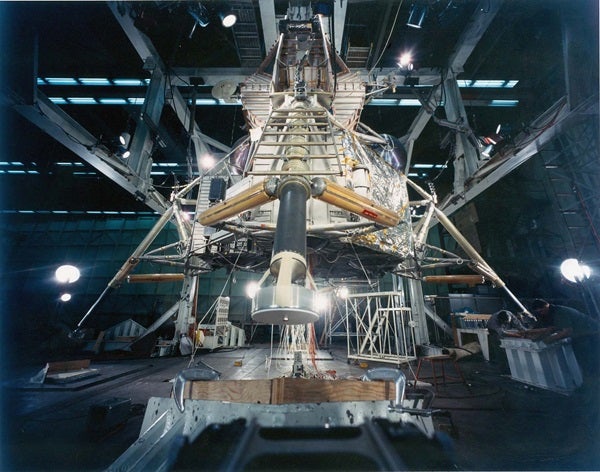
What they would descend in was unclear. No one knew how to land on another world, much less how to build something that could land on the Moon, so NASA asked interested contractors to submit bids to build the Lunar Excursion Module.
The Grumman Aircraft Engineering Corporation won the contract November 7, 1962. Work officially began January 14, 1963, just a little under seven years to the end-of-decade lunar landing deadline. Things immediately moved quickly, but while North American Aviation attempted to preserve a year’s worth of work with the Block concept, the Lunar Excursion Module suffered through its own development changes.
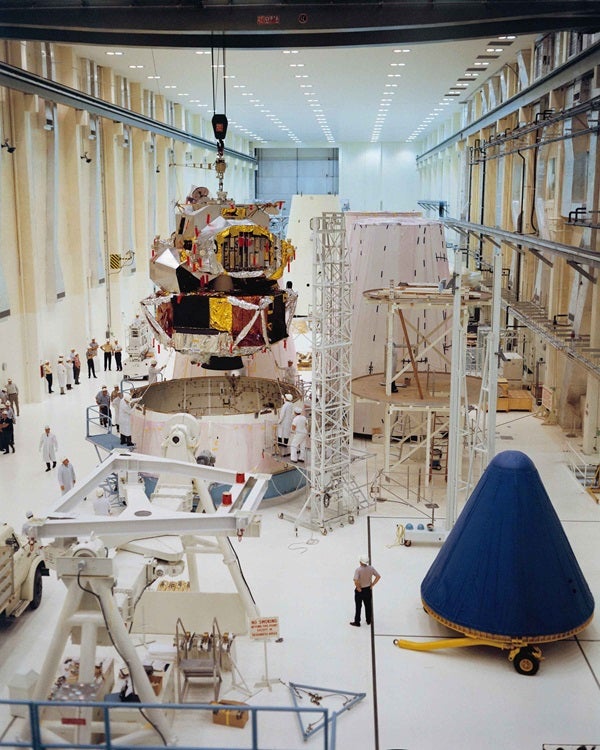
LM-1, an incomplete first version of the Lunar Module (note it has no landing legs), is lowered for mating to the spacecraft-LM adapter in November 1967. This LM was flown as part of the unmanned Apollo 5 mission, which tested the LM’s ascent and descent engines.
Grumman engineers merged necessity and experience. Necessity and NASA’s contract specifications dictated the LM would be a two-stage vehicle, wherein the descent stage would land on fixed gear and then serve as a launchpad for the ascent stage. Experience told Grumman that the simplest vertical landing vehicle was a helicopter, so engineers designed the LM with two seats and four bubblelike windows for ample visibility. But those windows caused a huge problem. Not only were they heavy, but they were weak points that opened the LM to potentially fatal temperature fluctuations.
To solve this problem, engineers at either NASA or Grumman — recollections are divided — realized that there was no rule saying astronauts had to fly sitting down. Standing closer to smaller windows would give the same visibility and in the Moon’s lower gravity field, just one-sixth what we feel on Earth, human legs would be more-than-adequate shock absorbers for the moment of lunar touchdown.
A buglike craft
By the fall of 1964, after only two years of development, the LM had become a spacecraft designed to do the unimaginable: land on the Moon.
On the outside, it almost didn’t look up to the task. Because it would be launched in a protective shroud and would only fly in a vacuum, Grumman engineers designed the LM from the inside out without worrying about aerodynamics.
Inside the LM, the crew would fly standing up, secured in place by hook-and-loop fasteners on the floor, as well as cables that clipped into their suits at waist level. Around them were 12 instrument panels housing 158 switches, 16 variable controls, four hand controllers, two computer keyboards, and a host of displays. Housed within this hardware was the Primary Guidance and Navigation Section (or PGNS, pronounced “pings”), the onboard digital autopilot system. While the computer monitored the craft’s position, environment, and consumables vital to the landing, the crew could keep an eye on displays and the lunar terrain, taking over manual control if needed.
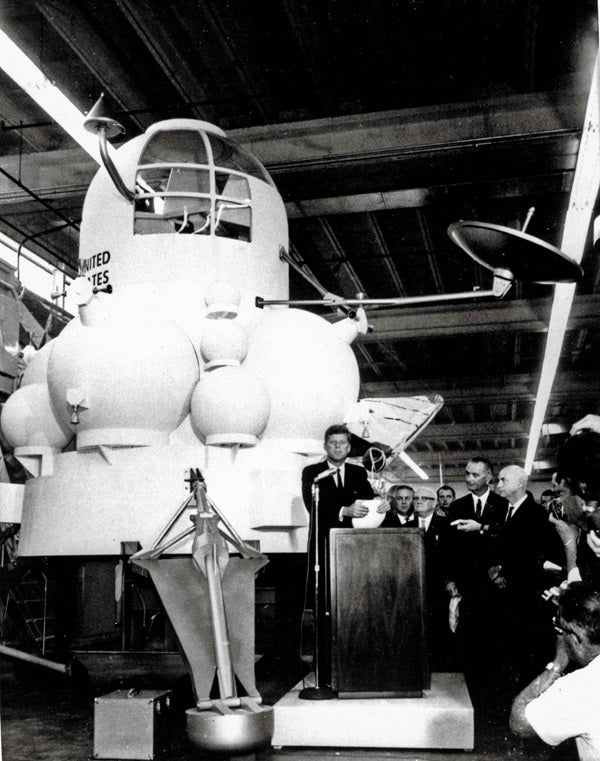
John F. Kennedy stands in front of a North American Aviation mock-up of a potential lunar lander design as the president prepares to address employees at the Manned Spacecraft Center in Houston on September 12, 1962.
The crew cabin was a snug 92 inches (234 centimeters) in diameter and 42 inches (107 cm) deep, with the LM’s external structure built directly around this hardware. The result was a lumpy ascent stage over an octagonal descent stage, which provided extra storage for surface experiment packages, lunar rovers (on later missions), and a special compartment for the flag.
The astronauts didn’t love the LM at first blush. As hotshot fighter pilots used to streamlined, aerodynamic planes, they thought the buglike spacecraft looked more gangly than flight-worthy. The crew of Apollo 9 even gave their LM the call sign “Spider” when it flew in March 1969.
But they came to love it. Two years ago, I had a chance to talk to David Scott, command module pilot of Apollo 9 and commander of Apollo 15. I asked him which of all the planes he’d ever flown was his favorite, and he answered, “The LM on fumes.” He said it was so light and responsive it was an absolute dream to pilot.
Though each spacecraft played a specific role, the CSM and LM together became the backbone of 11 Apollo missions — even famously so, on Apollo 13. Through triumphs and one successful failure, the Apollo Command/Service and Lunar Modules kept 24 men alive on what was arguably humanity’s most audacious journey.
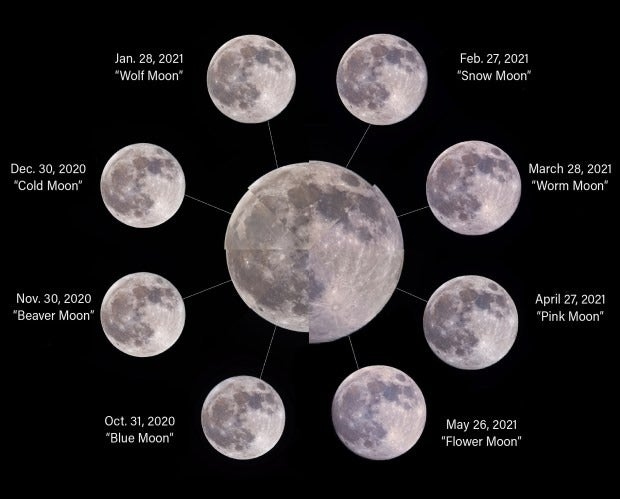
2024 Full Moon calendar: Dates, times, types, and names
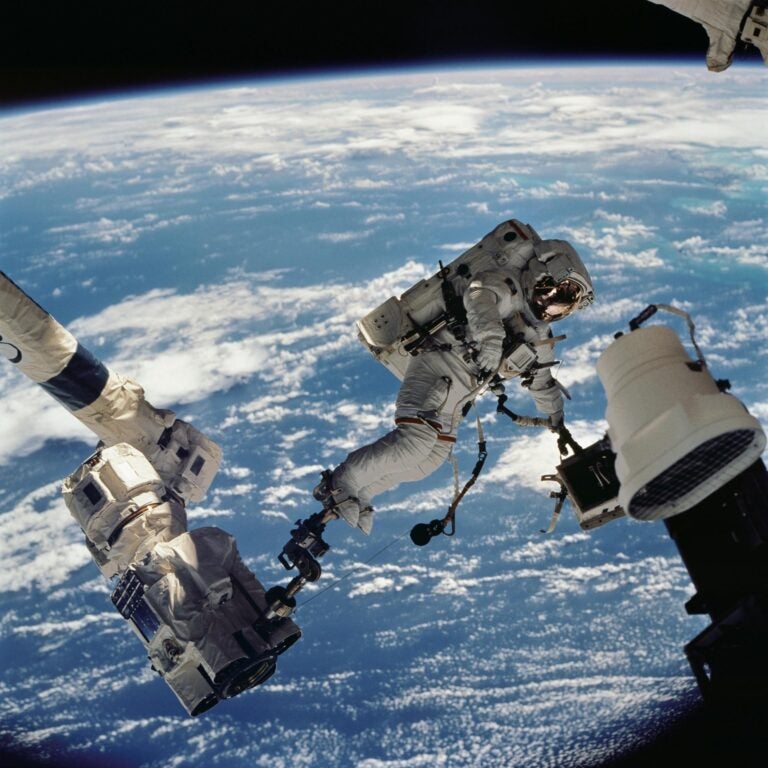
How do you keep astronauts healthy in space? It’s not easy.
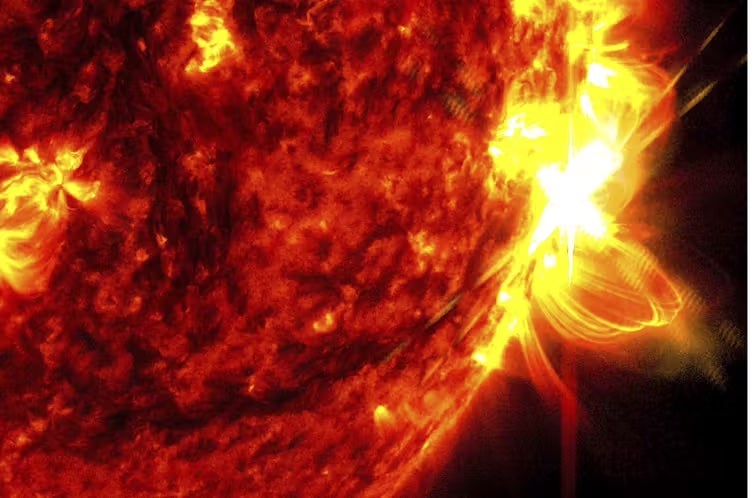
Space weather forecasting needs an upgrade to protect future Artemis astronauts
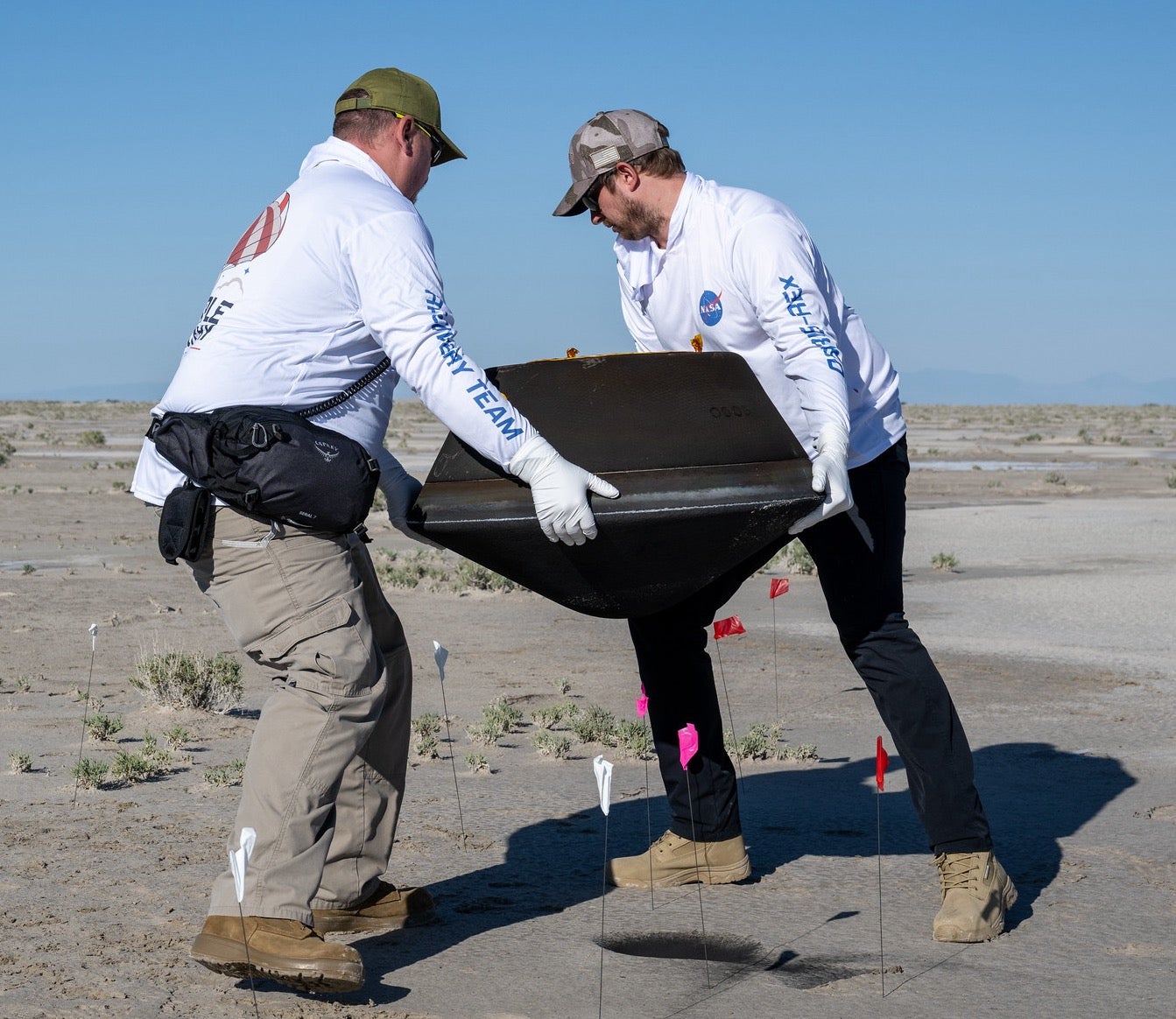
NASA’s asteroid Bennu sample return mission was a prime time to study an artificial meteor
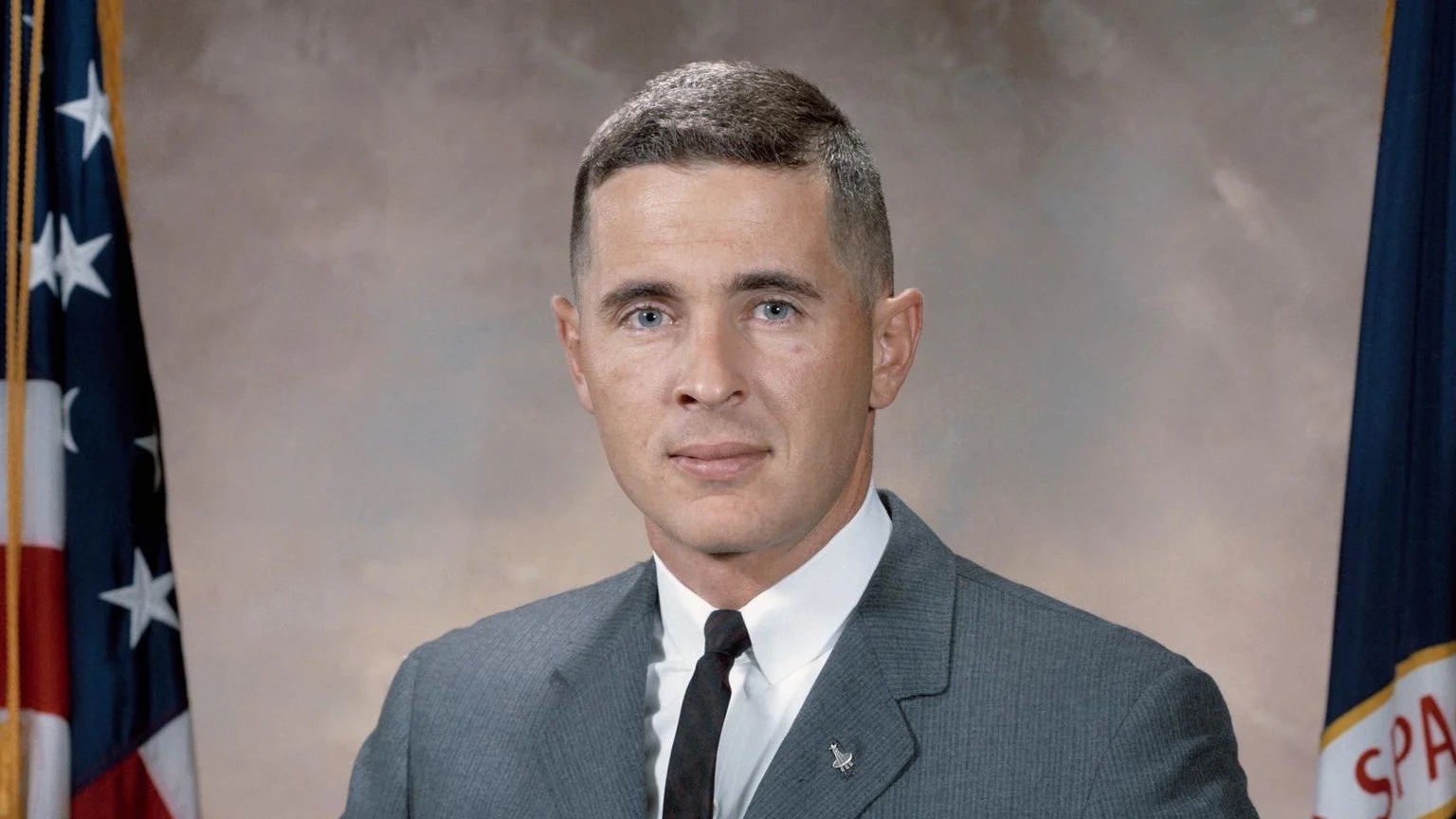
William Anders, NASA Astronaut and US Air Force Major General, dies at 90
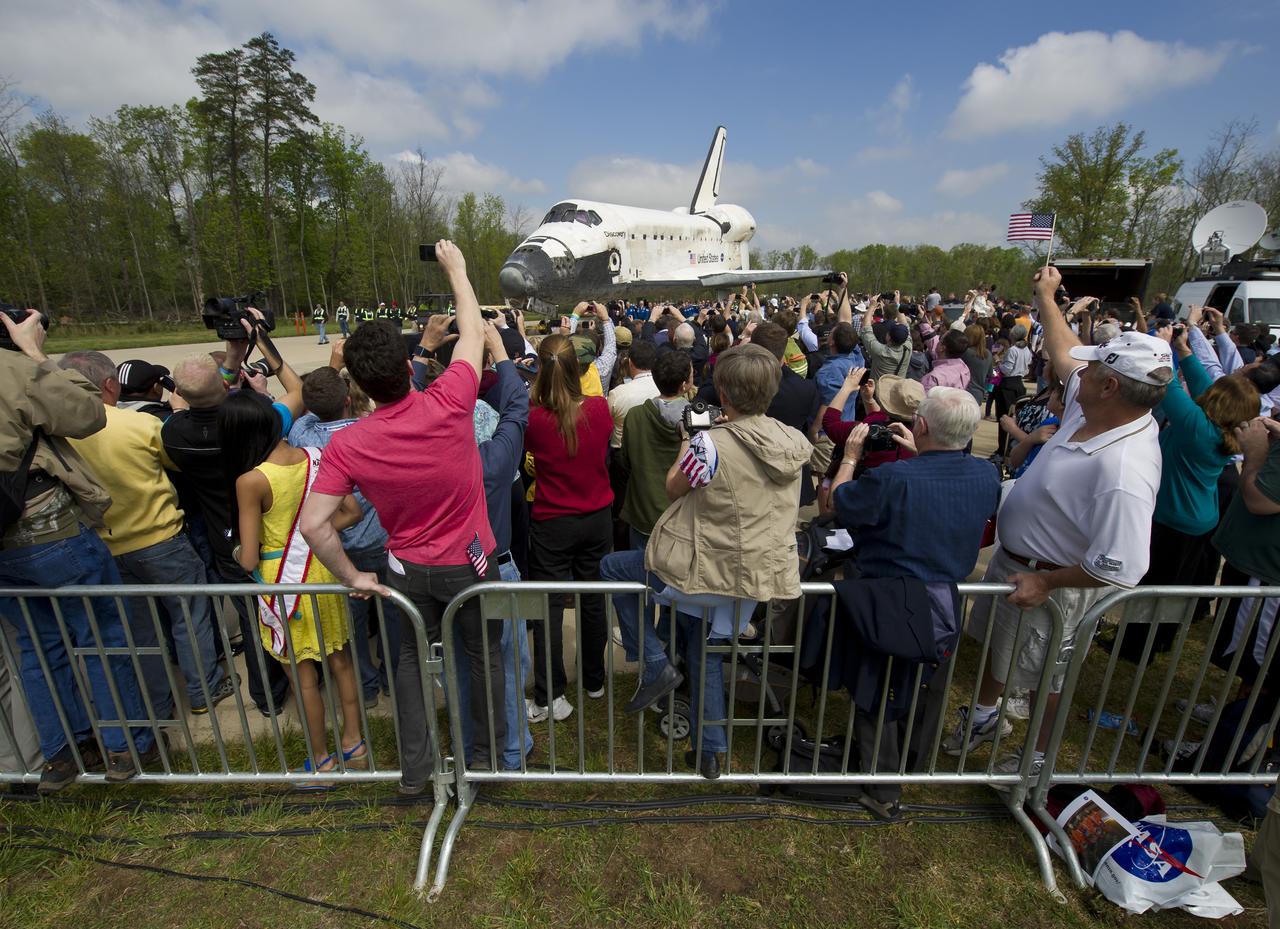
The People’s Spaceship: NASA, the Shuttle Program, and Public Engagement after Apollo
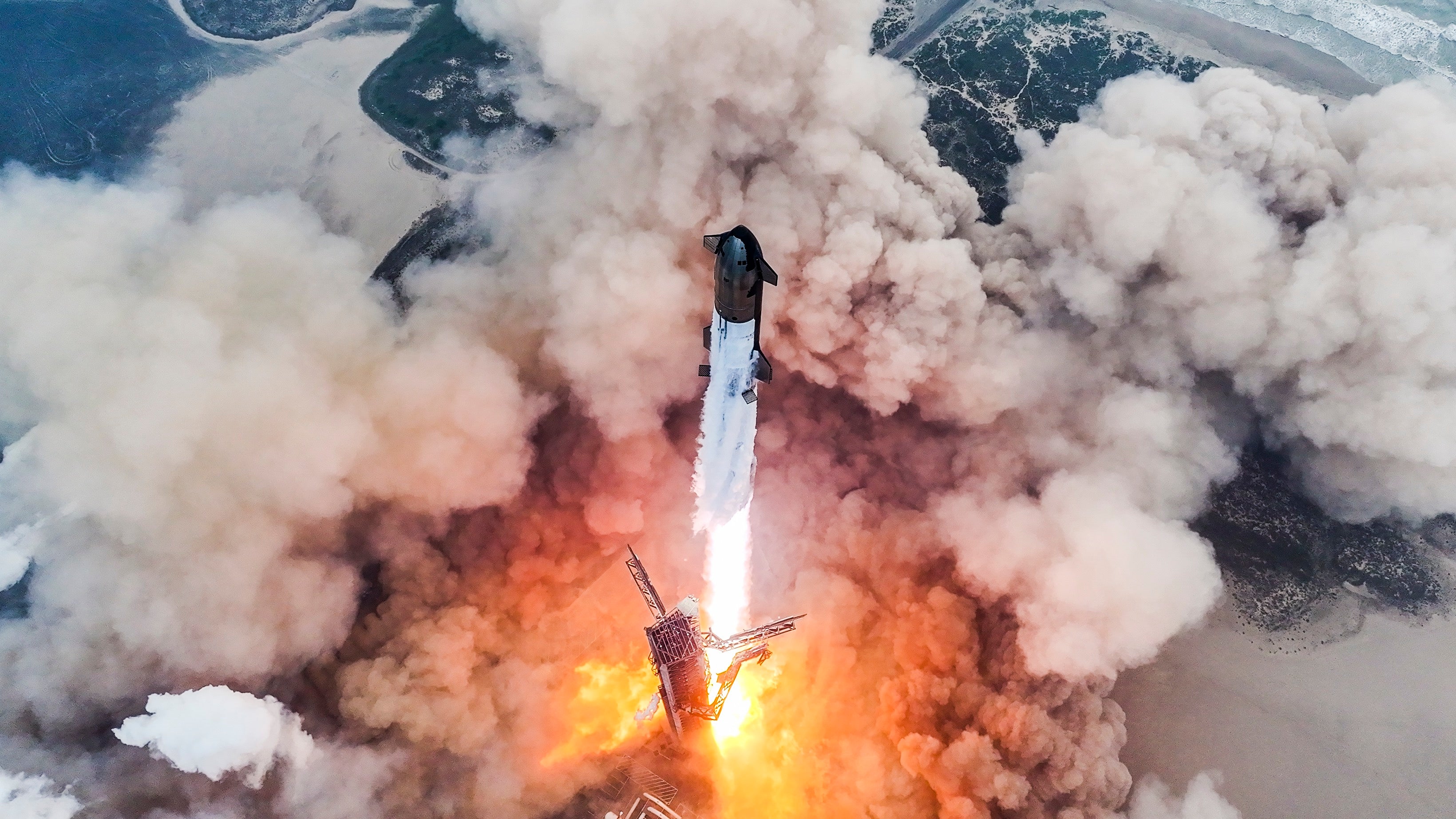
SpaceX’s Starship hangs on to make first successful reentry from space
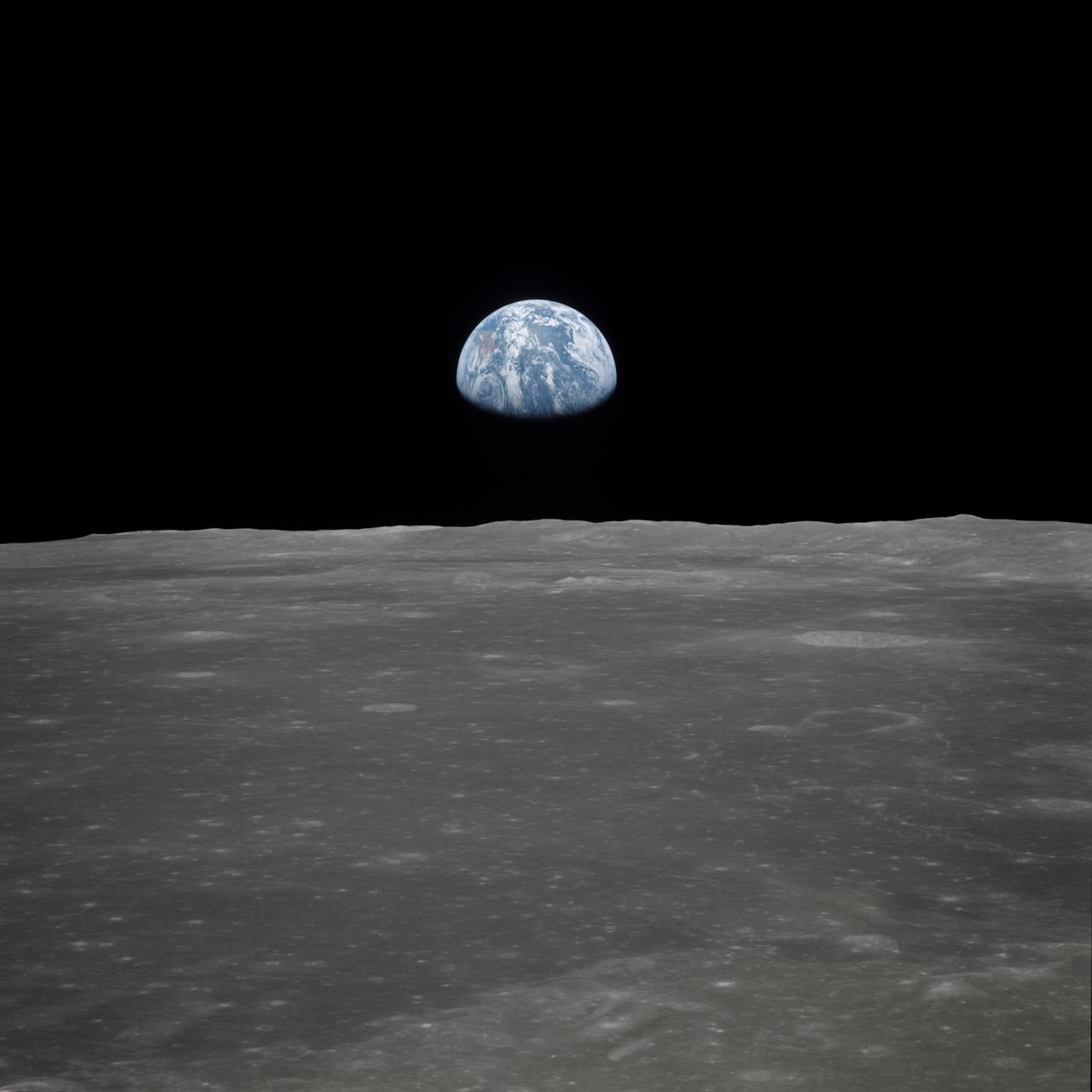
Why do pictures of Earth taken from the Moon show a black sky with no stars?
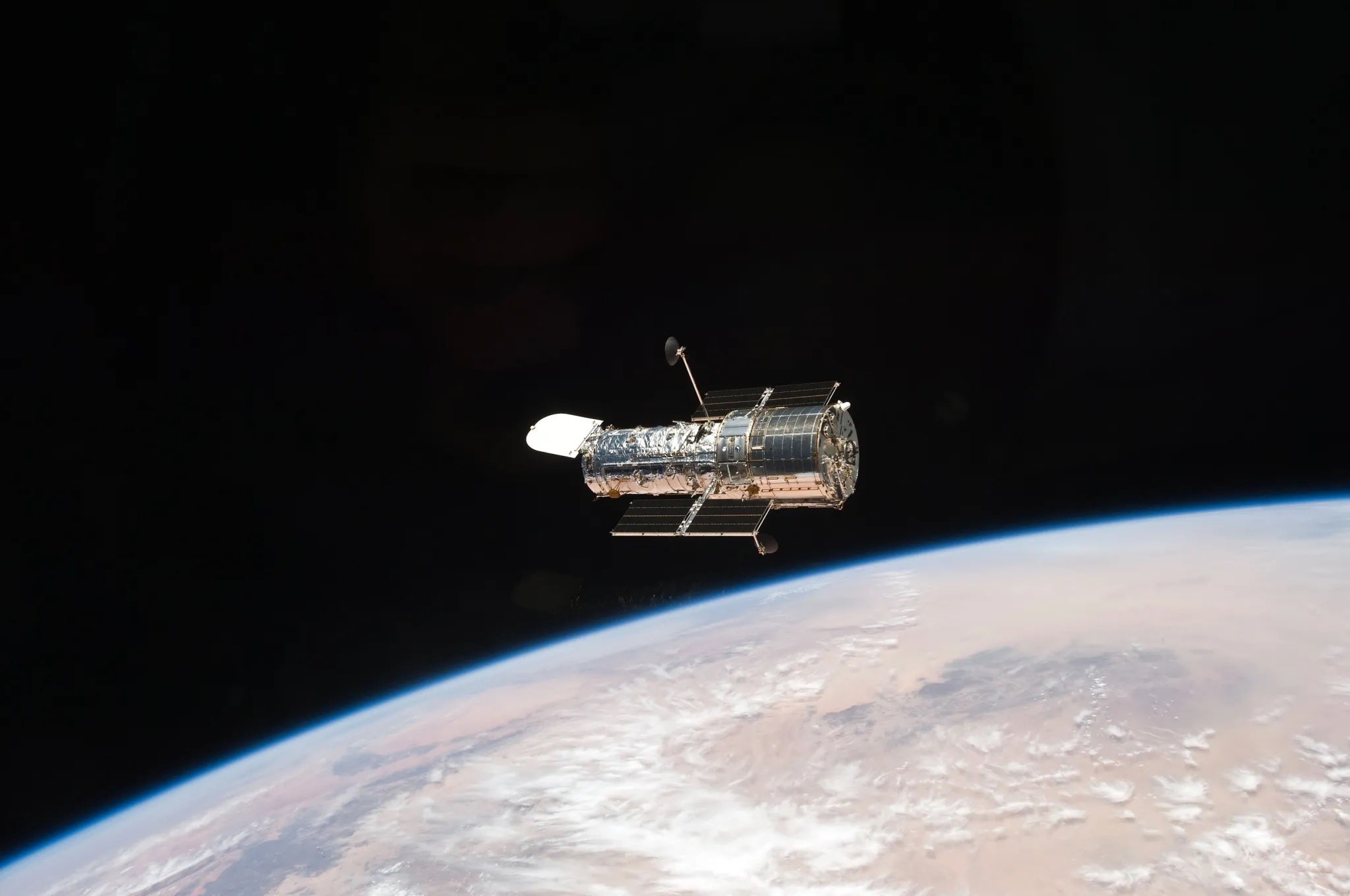
The aging Hubble Space Telescope is not finished quite yet
The Amazing Lunar Module: From Early Models to the Moon
Early lunar module model, in wood, 1960s
Apollo 9, March 1969. On the fourth day of the mission, astronaut David Scott stood in the open hatch of the command module and scanned the blue earth below.
Written By: Ben Cosgrove
Artists and engineers share this bond: their visions are often first embodied in rough, rudimentary form. Whether it’s a sculptor working in clay or an industrial designer using three-dimensional software, modeling is not just part of the creative process: to a large degree, it is the creative process.
For NASA’s engineers, finding ways to model the remarkable craft that would not only land astronauts on the moon, but would allow them to lift off from the lunar surface, rendezvous and link up with an orbiting vessel and return safely to Earth and their families well, tackling that sort of challenge is the reason so many of the best and brightest join NASA in the first place.
Here, LIFE.com offers a series of images celebrating the various Lunar Excursion Modules—scale-model and life-size—that NASA built through the years; the men who flew them; and the brilliant, daring minds that envisioned the extraordinary spacecraft in the first place.
First deployed during Apollo 9’s 10-day mission in March 1969, roughly 100 miles above the earth, and tested again a few months later, less than 10 miles above the lunar surface during Apollo 10’s “dry run” for the July 1969 moon landing, the various versions of the lunar module that NASA designed and produced represent, in microcosm, pretty much everything technological that got people excited about the American space program in the 1960s.
After all, behind the craft’s complex development is an audaciously straightforward idea—enter moon’s orbit; separate from command module; land on moon; lift off from moon; reconnect with command module; come home—that would take years of effort (and not a few mistakes) to finally put into triumphant, era-defining practice.
In July 1969, when Apollo 11’s rendition of the LEM, Eagle , touched down on a vast lunar plain named Mare Tranquillitatis , or the Sea of Tranquility, centuries before by two Italian astronomers Neil Armstrong radioed a simple, momentous phrase to Mission Control a quarter-million miles away in Houston.
“The Eagle has landed,” he said, cementing the lunar module’s central role in one of humanity’s greatest dramas.
Early lunar module model, in wood, 1960s Yale Joel The LIFE Picture Collection/Shutterstock
Early lunar module model, 1960s. Yale Joel The LIFE Picture Collection/Shutterstock
Lunar module model, 1969 Yale Joel The LIFE Picture Collection/Shutterstock
A sketch made by Dr. John C. Houbolt in 1961 for a lunar module, later adopted by NASA for Apollo 9. Arthur Schatz The LIFE Picture Collection/Shutterstock
This sketch made by Dr. John C. Houbolt in 1961 shows a modular concept much like the one that was ultimately adopted by NASA for the Lunar Excursion Module. Arthur Schatz The LIFE Picture Collection/Shutterstock
A sketch by Dr. John C. Houbolt suggested a design for a moon landing craft designated the “Lunar Schooner,” in 1961 Arthur Schatz The LIFE Picture Collection/Shutterstock
A full-scale model of the Lunar Excursion Module, 1969. The LIFE Picture Collection/Shutterstock
An astronaut descended the lunar module ladder during an enactment of a moon landing during a training exercise, 1967. Ralph Morse The LIFE Picture Collection/Shutterstock
Apollo 9 and the lunar module, 1969 NASA
Apollo 9, March 1969. On the fourth day of the mission, astronaut David Scott stood in the open hatch of the command module and scanned the blue earth below. NASA
The Apollo 9 Lunar Module, a.k.a., “Spider,” remained attached to the Saturn rocket stage while in low Earth orbit, March 1969. NASA
The Apollo 9 Lunar Module (a 30,000 lb. vessel nicknamed “Spider” by crew members Scott, McDivitt and Schweichkart), 100 miles above the Atlantic Ocean, March 1969. NASA
The Apollo 10 command module, piloted by astronaut John Young on his third space flight, entered into low orbit above the moon in May 1969 during a “dry run” for the July 1969 moon landing. The lunar module on this mission was nicknamed “Snoopy”; the command module was nicknamed “Charlie Brown.” (Charlie Brown, after all, rarely gets to have any fun. The same could not possibly be said of Young himself: he made six space flights over his 40-year career with NASA, and remains the only astronaut to have piloted four distinct classes of spacecraft: Gemini; the Apollo command and lunar modules; and the Space Shuttle.) NASA
During Apollo 11’s historic moon mission in July 1969, astronaut Buzz Aldrin unfurled a “solar wind sheet” designed to collect atomic particles blowing from the distant sun. The Lunar Excursion Module, which got Aldrin and Neil Armstrong safely to and from the lunar surface, stood behind him. NASA
With the Earth visible in the distance above the moon’s horizon, Apollo 11’s lunar module ascended toward the command module (piloted by astronaut Michael Collins while Armstrong and Aldrin were on the lunar surface). NASA
More Like This

A Young Actress Restarts Her Life in Postwar Paris

Eisenstadt’s Images of Change in the Pacific Northwest

Heartland Cool: Teenage Boys in Iowa, 1945

LIFE Said This Invention Would “Annihilate Time and Space”

“The Synanon Fix” in LIFE

Coca-Cola Comes to France!
Subscribe to the life newsletter.
Travel back in time with treasured photos and stories, sent right to your inbox


Apollo 17 Fact Sheet
By Cliff Lethbridge

Apollo 17 (NASA Code: AS-512/CSM-114/LM-12/LRV-3)
Launch Date: December 7, 1972
Launch Time: 12:33:00 a.m. EST
Launch Site: Launch Complex 39, Launch Pad 39A
Launch Vehicle: Apollo-Saturn V AS-512
Command Service Module: CSM-114
Command Module Nickname: America
Lunar Module: LM-12
Lunar Module Nickname: Challenger
Crew: Eugene A. Cernan, Commander Ronald E. Evans, Command Module Pilot Harrison H. Schmitt, Lunar Module Pilot
Back-up Crew: Young (CDR), Roosa (CMP), Duke (LMP)
Mission Duration: 12 Days, 13 Hours, 51 Minutes, 59 Seconds
Number of Lunar Orbits: 75
Recovery Date: December 19, 1972
Recovery: U.S.S. Ticonderoga (Pacific Ocean)
Mission Summary:
The final Apollo flight to the Moon was launched about 2 hours, 40 minutes late due to a technical difficulty during the countdown.
Engineers needed to bypass an electronic interlock mechanism by a jumper cable after the interlock would not allow launch operations to continue after the Saturn V second stage liquid oxygen tank was manually ordered to be pressurized.
The launch vehicle’s computerized Terminal Countdown Sequencer had failed to pressurize the tank automatically as intended. The resulting electronic glitch and resolution pushed back the launch until after midnight.
This was the first U.S. manned launch in darkness, and the huge Saturn V rocket treated viewers to what has arguably remained the most spectacular launch in the history of the U.S. space program.
The flight to the Moon went according to plan, and the Lunar Module (LM) Challenger landed in the Taurus-Littrow Valley on the Sea of Serenity at 2:55 p.m. EST on December 11, 1972. The landing occurred about 300 feet from the target landing site.
This particular landing site was selected because a landslide had recently been known to occur, bringing lunar material from the heights of the nearby Taurus Mountains close to the landing area. The site was also thought to be close to apparent volcanic activity.
As was the case during Apollo 16, the first steps onto the Moon were not televised. In this case, however, the lack of television coverage was planned. The camera equipment necessary to televise the first lunar steps was not carried to the Moon in order to conserve weight.
The first of three Moonwalks lasted 7 hours, 12 minutes. Astronauts Cernan and Schmitt planted a U.S. flag which had hung in Mission Control since Apollo 11. They also deployed the Advanced Lunar Science Experiment Package (ALSEP), the most advanced ALSEP of the Apollo program, and used the Lunar Roving Vehicle (LRV) to make a lunar excursion to Steno Crater.
The second Moonwalk lasted 7 hours, 37 minutes. This was the longest Moonwalk of the Apollo program, during which the astronauts used the LRV to make a lunar excursion to South Massif. The total distance driven by the LRV during this excursion was 11.8 miles, which also established a record for the Apollo program.
The third Moonwalk lasted 7 hours, 16 minutes. The astronauts used the LRV to make a lunar excursion to North Massif. This was the final Moonwalk of the Apollo program.
Although the Apollo 17 astronauts completed the last Moonwalks in the Apollo program, these were certainly not the least, as most records set during the course of the Apollo program were broken.
These records included the first flight of a NASA scientist-astronaut. Astronaut Schmitt was a geologist, and the first U.S. astronaut to participate in a manned space flight without being drafted by NASA as a pilot.
In addition, several records were broken on the Moon. The Apollo 17 LM and crew logged the longest stay on the Moon at 74 hours, 59 minutes, 38 seconds. The Apollo 17 Command Service Module (CSM) completed the most lunar orbits at 75, setting a record manned lunar orbit stay of 147 hours, 48 minutes.
Astronauts Cernan and Schmitt performed the longest single lunar surface excursion at 7 hours, 37 minutes, 22 seconds. They also logged the longest total excursion time on the Moon at 22 hours, 5 minutes, 4 seconds.
And, the last Apollo LRV completed the longest single LRV trip at 11.8 miles. The Apollo 17 LRV also logged the most distance driven on the lunar surface at a total of 21.75 miles.
Finally, a record 253 pounds of lunar rock and soil samples were collected and returned to Earth.
Challenger became the last LM to lift off the Moon at 5:54 p.m. EST on December 14, 1972.
During the return trip to Earth, astronaut Evans completed a spacewalk which lasted 1 hour, 7 minutes. Evans, who remained connected to the CSM by a 23-foot tether, made three trips to and from the Scientific Instrument Module (SIM) bay attached to the CSM Service Module (SM).
Evans retrieved film cartridges from the SIM and floated free for a time. This was the last spacewalk to date performed in deep space.
The return to Earth, splashdown and recovery were nominal.
Apollo 17 was not originally intended to be the last Apollo flight to the Moon. As a severe economic recession dawned and public interest in the lunar missions waned, lunar missions already designated Apollo 18, Apollo 19 and Apollo 20 were canceled.
SELECTED NASA PHOTOS FROM APOLLO 17
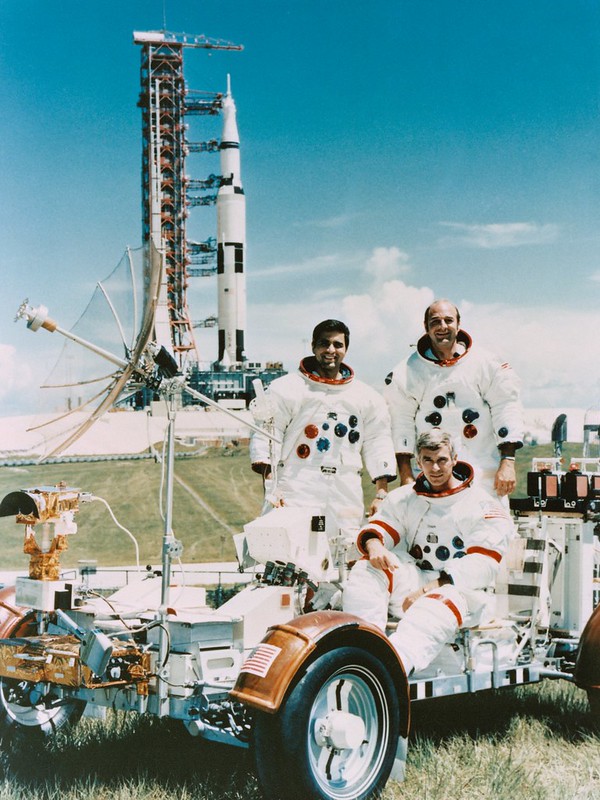
- Wednesday, 19 June 2024

Apollo 11 Lunar Module / EASEP
NSSDCA/COSPAR ID: 1969-059C
Description
The Apollo 11 Lunar Module (LM) "Eagle" was the first crewed vehicle to land on the Moon. It carried two astronauts, Commander Neil A. Armstrong and LM pilot Edwin E. "Buzz" Aldrin, Jr., the first men to walk on the Moon. Also included on the LM was the Early Apollo Scientific Experiment Package (EASEP), which consisted of several self-contained experiments to be deployed and left on the lunar surface, and other scientific and sample collection apparatus.
Mission Profile
The LM undocked from the Command/Service Module (CSM) at 17:44:00 UT. After a visual inspection by Collins, a separation maneuver was commenced at 18:11:53 UT. The LM descent engine fired for 30 seconds at 19:08 UT, putting the craft into a descent orbit with a closest approach 14.5 km above the Moon's surface. At 20:05 the LM descent engine fired for 756.3 seconds and descent to the lunar surface began. The LM landed at 20:17:40 UT (4:17:40 p.m. EDT) on 20 July 1969 in the region known as Mare Tranquilitatis (the Sea of Tranquility) at 0.67416 degrees N latitude, 23.47314 degrees E longitude (as determined from Lunar Reconnaissance Orbiter images, DE 421 mean Earth/polar rotation axis reference frame), Armstrong reporting, "Houston, Tranquility Base here - the Eagle has landed".
Armstrong stepped onto the lunar surface at 02:56:15 UT on 21 July (10:56:15 p.m. July 20 EDT), stating, "That's one small step for man, one giant leap for mankind". He then collected a small contingency sample of lunar material. Aldrin followed 19 minutes later, calling the lunar surface "Magnificent desolation". The astronauts then unveiled the plaque mounted on a strut behind the ladder and read the inscription aloud: "Here men from the planet Earth first set foot on the Moon July 1969, A.D. We came in peace for all mankind." They put up an American flag and talked to President Nixon by radiotelephone. The astronauts deployed the EASEP and other instruments, took photographs, and collected 21.55 kg of lunar rock and soil. The astronauts traversed a total distance of about 250 meters, both ranging up to about 100 meters from the LM. They took two core tube samples of lunar soil and packed these along with the lunar samples and the solar wind experiment into the sample boxes. Aldrin returned to the LM first, after 1 hour 41 minutes on the lunar surface, Armstrong followed about 12 minutes later, at 05:09:32 UT, after transferring the sample boxes up to Aldrin and placing a packet of memorial items on the ground. The EVA ended at 5:11:13 UT when the LM hatch was closed. Armstrong and Aldrin spent the next 7 hours resting and checking out systems.
The LM lifted off from the Moon at 17:54:01 UT on 21 July after 21 hours, 36 minutes on the lunar surface. After docking with the CSM, piloted by Michael Collins, at 21:34:00 UT, the LM was jettisoned into lunar orbit at 00:01:01 UT on 22 July. The fate of the LM is not known, but it is assumed that it crashed into the lunar surface sometime within the following 1 to 4 months.
Lunar Module Spacecraft and Subsystems
The lunar module was a two-stage vehicle designed for space operations near and on the Moon. The spacecraft mass of 15103 kg was the total mass of the LM ascent and descent stages including propellants (fuel and oxidizer). The dry mass of the ascent stage was 2445 kg and it held 2376 kg of propellant. The descent stage dry mass (including stowed surface equipment) was 2034 kg and 8248 kg of propellant were onboard initially. The ascent and descent stages of the LM operated as a unit until staging, when the ascent stage functioned as a single spacecraft for rendezvous and docking with the command and service module (CSM). The descent stage comprised the lower part of the spacecraft and was an octagonal prism 4.2 meters across and 1.7 m thick. Four landing legs with round footpads were mounted on the sides of the descent stage and held the bottom of the stage 1.5 m above the surface. The distance between the ends of the footpads on opposite landing legs was 9.4 m. One of the legs had a small astronaut egress platform and ladder. A one meter long conical descent engine skirt protruded from the bottom of the stage. The descent stage contained the landing rocket, two tanks of aerozine 50 fuel, two tanks of nitrogen tetroxide oxidizer, water, oxygen and helium tanks and storage space for the lunar equipment and experiments, and in the case of Apollo 15, 16, and 17, the lunar rover. The descent stage served as a platform for launching the ascent stage and was left behind on the Moon.
The ascent stage was an irregularly shaped unit approximately 2.8 m high and 4.0 by 4.3 meters in width mounted on top of the descent stage. The ascent stage housed the astronauts in a pressurized crew compartment with a volume of 6.65 cubic meters which functioned as the base of operations for lunar operations. There was an ingress-egress hatch in one side and a docking hatch for connecting to the CSM on top. Also mounted along the top were a parabolic rendezvous radar antenna, a steerable parabolic S-band antenna, and 2 in-flight VHF antennas. Two triangular windows were above and to either side of the egress hatch and four thrust chamber assemblies were mounted around the sides. At the base of the assembly was the ascent engine. The stage also contained an aerozine 50 fuel and an oxidizer tank, and helium, liquid oxygen, gaseous oxygen, and reaction control fuel tanks. There were no seats in the LM. A control console was mounted in the front of the crew compartment above the ingress-egress hatch and between the windows and two more control panels mounted on the side walls. The ascent stage was launched from the Moon at the end of lunar surface operations and returned the astronauts to the CSM.
The descent engine was a deep-throttling ablative rocket with a maximum thrust of about 45,000 N mounted on a gimbal ring in the center of the descent stage. The ascent engine was a fixed, constant-thrust rocket with a thrust of about 15,000 N. Maneuvering was achieved via the reaction control system, which consisted of the four thrust modules, each one composed of four 450 N thrust chambers and nozzles pointing in different directions. Telemetry, TV, voice, and range communications with Earth were all via the S-band antenna. VHF was used for communications between the astronauts and the LM, and the LM and orbiting CSM. There were redundant tranceivers and equipment for both S-band and VHF. An environmental control system recycled oxygen and maintained temperature in the electronics and cabin. Power was provided by 6 silver-zinc batteries. Guidance and navigation control were provided by a radar ranging system, an inertial measurement unit consisting of gyroscopes and accelerometers, and the Apollo guidance computer.
Early Apollo Surface Experiments Package (EASEP)
The Early Apollo Surface Experiments Package (EASEP) consisted of a set of scientific instruments emplaced at the Apollo 11 landing site by the astronauts. This package was the forerunner of the ALSEP experiment packages used on the later Apollo missions. It consisted of two solar panels to provide power (the EASEP could only operate during lunar day), an antenna and communications system to send data to Earth ground stations and receive commands, a passive seismometer, designed to measure seismic activity and physical properties of the lunar crust and interior, and a lunar dust detector, to measure dust accumulation and radiation damage to solar cells. The EASEP consisted of a square base on which was mounted the seismometer and dust detector, along with an isotope heater and cylindrical antenna mast with an antenna positioning mechanism. Two brackets protruded from opposite sides of the base and held the canted rectangular solar panels, positioned to face towards the east and west. The unit had a total mass of 48 kg. The EASEP received uplink commands at 2119 MHz and transmitted telemetry data back to Earth at 2276.5 MHz. The laser ranging retroreflector (LRRR) was also considered part of the EASEP although it was not attached to the unit and required no power. It was deployed about 5 meters NNW of the EASEP.
The EASEP was deployed approximately 17 m south of the LM, at 0.6735 N latitude, 23.4730 E longitude and was turned on by ground command at 04:40:39 UT on 21 July 1969 while the astronauts were still on the surface. About 5 hours before local lunar sunset at 10:58:46 UT on 3 August 1969 transmission was stopped by ground command when the power began to drop as predicted. Despite operating temperatures which exceeded the planned maximum by 30 C the EASEP functioned normally. The instrument was turned on again on the next lunar day but on 27 August 1969, near noon of this second lunar day, the EASEP no longer accepted commands from Earth stations and the experiment was terminated.
Alternate Names
- Apollo 11 LM/EASEP
- Apollo11EASEP
- urn:nasa:pds:context:instrument_host:spacecraft.a11e
Facts in Brief
Launch Date: 1969-07-16 Launch Vehicle: Saturn 5 Launch Site: Cape Canaveral, United States Mass: 15103 kg
Funding Agency
- NASA-Office of Manned Space Flight (United States)
Disciplines
- Planetary Science
Additional Information
- Launch/Orbital information for Apollo 11 Lunar Module / EASEP
- Telecommunications information for Apollo 11 Lunar Module / EASEP
- Experiments on Apollo 11 Lunar Module / EASEP
- Data collections from Apollo 11 Lunar Module / EASEP
Questions and comments about this spacecraft can be directed to: Dr. David R. Williams Personnel
Selected references.
- Apollo 11 preliminary science report, NASA, SP-214, Wash, DC, 1969.
- Davies, M. E., and T. R. Colvin, Lunar coordinates in the regions of the Apollo landers, J. Geophys. Res. , 105, No. E8, 20277-20280, Aug. 2000.
Diagram of the Apollo Lunar Module. (Courtesy of NASA History Office .)
Other Sources of Apollo 11 Information at NSSDCA
Apollo 11 Command Module Apollo 11 Mission - images, audio, and a brief history. Apollo Page
Other Sources of Apollo Information at NSSDCA
Apollo landing sites and ALSEP and LRRR locations - and information on the modified DMA/603 control network Apollo Page Lunar Science Page
Related Information at NSSDCA
Nssdca master catalog search.
- Experiments
- Data Collections
- Publications
- New/Updated Data
- Lunar/Planetary Events
- + Privacy Policy and Important Notices
- NASA Official: Dr. David R. Williams
- Curator: E. Bell, II
- Version 5.1.15, 28 October 2022

Lunar Excursion Module (LEM) – Explorer of the unknown

- Jul 5, 2023
The Lunar Excursion Module (LEM) , also known as the Apollo Lunar Module ( LM ), was a crucial component of the Apollo program. The design and construction of the LEM was carried out under the direction of the Grumman aerospace company between 1962 and 1969, to land astronauts on the Moon. The LEM was designed to transport two crew members from the Command and Service Module ( CSM ) in lunar orbit to the surface of the Moon and back .

A challenge to the unknown
The design of the LEM was a significant engineering challenge , as it had to be able to resist the critical environment of space and the Moon’s surface while also being light enough to be launched from Earth. Moreover, because the engineers didn’t have any data on the lunar surface, they had to be ready for anything .
Advertisement
On November 7, 1962, Grumman Aircraft Engineering Corporation was awarded the project, and construction began. The final design of the LEM consisted of two parts: the descent stage and the ascent stage .

Fall like a feather!
The descent stage was the lower section of the LEM and was responsible for landing the spacecraft on the Moon’s surface . The module, which had a total mass of 10,000 – 11,000 kg (22,046 pounds), contained the engines, fuel, and other equipment needed for landing and surface operations. The entire stage was covered with a thin gold-colored film called Kapton , a special thermal insulating material capable of remaining stable in a wide range of temperatures, from -269 °C to +400 °C. It also covered the body of the descent stage and the 4 legs.

To land on lunar soil, the descent stage had a landing gear consisting of a trellis structure to which 4 telescopic legs were fixed. Fun fact, the LEM traveled with the “landing gear” folded; upon landing, the pilot deployed them using the explosion of small charges placed on the fuselage. The descent stage also provided a stable platform for the ascent stage to launch from when the mission was complete.
Fly like an eagle!
The ascent stage was the upper section of the LEM and was used to return the astronauts to the CSM in lunar orbit. It weighs about 4.5 tons (9.920 pounds). Its complex shape is asymmetrical for reasons of optimization of the interior space. It contained the crew compartment, and life support systems, called Environmental Control Subsystem ( ECS ), that provided liveable conditions for the two astronauts when the LEM was separated from the CSM and the ascent engine.

During lift-off, the engine thrust was constant . Since the engine nozzle was fixed, the trajectory could not be adjusted, and the corrections were made by the maneuvering motors of the Reaction control system (RCS). They were located at each corner of the module, and their combined actions allowed the module to be maneuvered very precisely . The ascent stage also had a docking port, which allowed it to connect to the CSM for the journey back to Earth.

The incredible flying power
One of the key features of the LEM was its ability to be piloted manually by the astronauts, giving them greater control and flexibility during the landing process. The navigation system was a true engineering jewel , based on an inertial guidance system , and it allowed to carry out all the maneuvers even when communications with the Earth were cut off , as expected when the spacecraft was behind the Moon. This was particularly important as the LEM had to navigate over rough terrain and avoid obstacles such as large boulders and craters.

From theory to practice, new car smell
Finally, on January 22, 1968, 9 months late on the scheduled date, the LEM was tested for the first time during the Apollo 5 mission. The LEM made its first manned flight during the Apollo 9 mission in March 1969, when all mission maneuvers were tested in Earth orbit.
The first successful manned lunar landing was achieved during the Apollo 11 mission in July 1969, when astronauts Neil Armstrong and Edwin “Buzz” Aldrin became the first humans to set foot on the Moon. The LEM was used in a total of six manned lunar landings between 1969 and 1972.

How to accomplish a task you are not designed for
The LEM was also the protagonist of one of the scariest accidents in the history of the Apollo missions. On the journey to the Moon of Apollo 13, a fuel cell exploded in the CMS service module, destroying part of it. To save themselves, since the CMS was now unusable, the crew took refuge in the lunar module, activating it and using it as a lifeboat . The LEM’s descent motor was fired several times to correct the course.
In the iconic episode of the adaptation of the CO2 filters, when carbon dioxide levels were getting critical, air filters had to be changed. The astronauts were forced to place the CMS filters (square-shaped) on the circular slots of the LEM ones; everything worked beautifully.

Face the challenges
The design and development of the LEM represented a significant achievement in engineering and technology, and it remains an iconic symbol of the Apollo program and the space race. The success of the LEM and the Apollo program demonstrated the power of human ingenuity and innovation . Also, to develop something to challenge the unknown of which, scientists and engineers had very little data available.
Today, the legacy of the LEM lives on in the ongoing efforts to explore the Moon and other celestial bodies. The development of new technologies and spacecraft, such as the Orion capsule for NASA’s Artemis program, is building on the achievements of the Apollo program and paving the way for future manned missions to the Moon and beyond.

Federico Coppola
Graduated in history from Federico II University in Naples, passionate about space, writing, and with an incurable dream of flying up through the clouds to reach the stars. Admin of the Instagram page Italian_space_meme
Related Posts


Starliner Finally Launched with a Crew Onboard
- Jun 5, 2024

Terran Orbital Unveils Two New Spacecraft Platforms for U.S. Government Agencies
- Jun 4, 2024

Apollo Television Camera: Capturing Fascinating History From the Moon
- May 26, 2024

Rocket Lab launches PREFIRE: A New Era in Polar Climate Investigation
- May 25, 2024
One comment
Simply want to say your article is as surprising. The clearness in your post is just nice and i could assume you’re an expert on this subject. Well with your permission let me to grab your RSS feed to keep updated with forthcoming post. Thanks a million and please continue the rewarding work.
Leave a Reply Cancel Reply
Your email address will not be published. Required fields are marked *
Name *
Email *
Add Comment *
Save my name, email, and website in this browser for the next time I comment.
Post Comment
Trending Articles

To provide the best experiences, we and our partners use technologies like cookies to store and/or access device information. Consenting to these technologies will allow us and our partners to process personal data such as browsing behavior or unique IDs on this site and show (non-) personalized ads. Not consenting or withdrawing consent, may adversely affect certain features and functions.
Click below to consent to the above or make granular choices. Your choices will be applied to this site only. You can change your settings at any time, including withdrawing your consent, by using the toggles on the Cookie Policy, or by clicking on the manage consent button at the bottom of the screen.
The Apollo Lunar Module (LM) was a two-stage vehicle designed by Grumman to ferry two astronauts from lunar orbit to the lunar surface and back. The upper ascent stage consisted of a pressurized crew compartment, equipment areas, and an ascent rocket engine. The lower descent stage had the landing gear and contained the descent rocket engine and lunar surface experiments.
LM 2 was built for a second unmanned Earth-orbit test flight. Because the test flight of LM 1, performed as part of the Apollo 5 mission, was so successful, a second unmanned LM test mission was deemed unnecessary. LM-2 was used for ground testing prior to the first successful Moon-landing mission. In 1970 the ascent stage of LM-2 spent several months on display at the "Expo '70" in Osaka, Japan. When it returned to the United States, it was reunited with its descent stage, modified to appear like the Apollo 11 Lunar Module "Eagle," and transferred to the Smithsonian for display.
This object is not on display at the National Air and Space Museum. It is either on loan or in storage.

- Get Involved
- Host an Event
Thank you. You have successfully signed up for our newsletter.
Error message, sorry, there was a problem. please ensure your details are valid and try again..
- Free Timed-Entry Passes Required
- Terms of Use
- ASME Foundation
- Sections & Divisions
- Sign In/Create Account
Engineers Remember the Making of the Lunar Module
- Topics & Resources
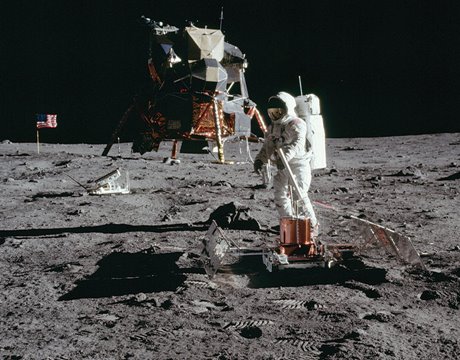
Buzz Aldrin sets up scientific equipment about 25 m from the Eagle. The lunar module was not only a pioneering spacecraft, it was designated a mechanical engineering landmark in 2002. Photo: NASA
Date Published:
Jul 1, 2019
Jeff O’ Heir
The historical significance of Peter Kachmar’s job at the MIT Instrumentation Lab didn’t hit him until a few weeks after the bulk of it was finally over. It was a clear night toward the end of July when he took a minute to stare at the Moon. There are three men up there right now, he thought in wonderment, and two of them are actually on its surface.
“We put them there, and we returned them home safely,” he said to himself. “We did it.”
Kachmar was not only thinking of the country’s achievement, but also of the 400,000 engineers, technicians, and scientists who worked on the Apollo Program during the span of its 14-year run. Fifty years after Apollo 11 successfully put the first men on the Moon, engineers who worked on the mission say their feeling of pride, awe, and accomplishment are stronger than ever. Kachmar’s certainly is.
“When I was there working on it, it was more like, ‘We’ve got a job to do, we’re engineers, we can get the job done,’ ” said Kachmar, who joined the lab, now called Draper Laboratory, in 1965 and helped to develop the algorithms and crew procedures for the Apollo Rendezvous System, used to guide the lunar module from the command module to the moon’s surface, and back. “And I’ve come to realize what a tremendous feat it really was.”
Kachmar is not alone. On the 50th anniversary of Apollo 11, engineers across the country are reflecting on what turned out for many to be the most important, memorable, and influential job they’ve held throughout long and satisfying careers. Put into context, how couldn’t it be?
Read More about Top 10 Space Missions Set to Explore New Frontiers
Lunar Bound
Most of them were fresh out of school or signing on to their first real jobs. Within days of starting, they were creating new materials, technologies, structures, and spacecraft that would make the seemingly impossible dream of walking on the moon a reality. President Kennedy’s challenge “to go to the moon in this decade and do other things, not because they are easy, but because they are hard,” inspired and fueled them through long days and weeks.
Many worked alongside older engineers, stars in their fields, who dropped their egos to help a young colleague solve a problem and do the job right. They entered with the fundamentals of their education and left with a new set of knowledge, skills, and confidence that no school or other job could offer.
Galvanized, they all strove toward achieving a national goal–not one based on killing an enemy but on advancing humanity–that most of the world also embraced. And together, from the July 16 launch of the Saturn V rocket to the astronauts’ safe return on July 24, they celebrated the accomplishments that made Apollo 11 one giant leap for mankind.
“I cried and I cried,” said Anthony Cacioppo, remembering the Apollo 11 milestones he watched with his colleagues at the former Grumman Aircraft headquarters in Bethpage, N.Y. Cacioppo, a member of ASME’s Long Island section, worked from 1965 to 1970 as an intern at Grumman while studying for his engineering degree at Pratt Institute. “And … today … I still cry about that experience,” he said, unable to hold back the tears. “It was a wonderful experience.”
In 1962, the company beat out nine others for the sole contract to design and build the Apollo Lunar Excursion Module, later shortened to lunar module and typically referred to as the “lem.” Until the program ended, more than 3,000 engineers and 7,000 other Grumman employees hand-built 13 full versions of it.
For any engineer or technician, especially a young intern, the company was a special place to work, offering a goldmine of opportunity. “It was a gift, a privilege,” said Cacioppo, who worked on packaging new honeycomb sandwich materials, cable systems used to move the astronauts around during simulations, and instrumentation and environmental controls, among other areas.
Engineering Feat
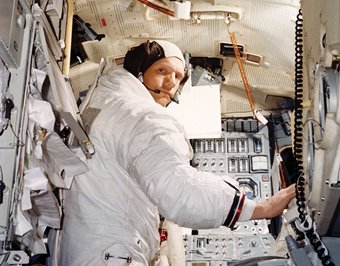
Overseen by Grumman aerospace engineer Thomas Kelly, almost every element of its design, construction, and testing pushed and expanded the limits of multiple engineering disciplines. The team developed and incorporated novel lightweight materials and cutting edge electrical, communication, navigation, and computer hardware and software systems.
Hear more about the Making of the Lunar Module on ASMETechCast
“As an engineer, you couldn’t want anything better than that. We were developing technology that had never been used before,” Cacioppo said at the Cradle of Aviation Museum in Garden City, N.Y., where he and other Grummanites recently met to reminisce about their experience. Several of those engineers volunteer as guides at the museum, which houses many exhibits based on the LM and includes one of the last built for the program. “Talk about an adventure. That’s part of the legacy that I look back on.”
In its heyday during World War II and the Cold War, Grumman’s aircraft and other products were so well built the company earned the nickname the Grumman Iron Works. The LM was no exception, proving to be one of the most consistently reliable of the Apollo mission vehicles. Ed Lee, a thermal engineer who helped forge the iron at Grumman, witnessed the LM’s reliability first-hand when in 1970 the crew of Apollo 13 reported, “Houston, we’ve had a problem.”
A Chinese immigrant, Lee took Kennedy’s space speeches to heart and pledged to help him send men to the Moon. “I thought, ‘This country is good to me. I have to do my best because of (Kennedy’s) challenge. I want to do something for my country,’” he said.
Lee had spent two years in ROTC and toyed with joining the Army. But his advisors thought his skills could be put to better use. “Because of my mechanical engineering (background), they said to do it the other way: ‘Instead of going to the front and fight for the country, you can do that with your knowledge of systems and engineering.’ And that’s what I did.”
Lee worked on developing the module’s external and internal insulation, environmental controls, and heat transfer systems needed to protect the astronauts and instruments from the extreme temperatures on the moon’s surface and the heat generated by the vehicle’s engines.
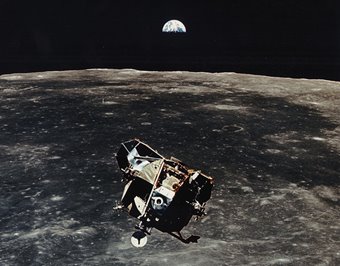
The LM’s success didn’t surprise Mike Lisa, who now leads the Cradle of Aviation’s volunteer program, given the amount of QA tests it underwent. Lisa signed onto Grumman in 1963 as an instrumentation engineer, a job that “became so varied it was pathetic,” he joked. His main duties, though, involved countless rounds of vibration, shock, and thermal vacuum tests to ensure the LM’s different components could withstand the rigors of space travel. “Every part had to be tested,” he said. “We knew what we had to achieve, and once we achieved that we had to go beyond it.”
Ross Bracco often went beyond. He worked on the LM mainly as a structural designer, as well as with the propulsion engineering group and the flight test department. One of his jobs was to design a panel to support tool components in one of the module’s high-vibration areas. He decided an extremely thin but strong honeycomb structure would work best. While all of the module’s components were designed to meet NASA’s criteria, the Grumman engineers would often add on safety factors of 15, 20, or 30 percent. Bracco tried to hit 100 percent on his. “I said, I don’t want my design to hurt anybody. I want to make sure these fellows had the opportunity to come home safely. So I designed a much higher safety factor on my own.”
Despite the confidence built through those redundancies and extra steps, the design teams still got nervous when NASA’s QA inspectors visited Bethpage. They never knew what to expect.
One day, the inspectors were examining the “clean room” where much of the LM was assembled. All of a sudden they announced they were shutting things down and made everyone leave the room. It turned out an inspector had found a discarded piece of chewing gum on the floor of the LM. “What precipitated was this incredible inspection that locked down production for almost a week,” Lisa said.
That type of QA, though, helped save lives of the Apollo 13 crew when a spark from an exposed wire in the
Odyssey CSM caused an oxygen tank to explode, shutting off power to it. The crew squeezed into the Aquarius LM, built for only two people and not designed for re-entry, using it for life support and propulsion.
Lee had just gotten home after a 12-hour shift working in mission support area and was watching TV when his boss called. “We have a problem,” he told Lee. “Get back here.” Lee went back and with his team consulted on how to reduce the power usage of the Aquarius and monitor the temperatures inside of it to get the astronauts safely back to earth. “We were able to do that,” he said.
Lee, along with Philip Jacknis, a 44-year ASME member and past chair of the Long Island section, served on the society’s nominating committee that designated the LM a national historic mechanical engineering landmark in 2002.
“It really was an iconic engineering feat,” said Jacknis, who had worked at Grumman for three summers beginning in 1966, keeping track of and distributing technical documents while studying mechanical engineering at The Cooper Union. He worked at the company for 44 years. “It underscores the saying ‘form follows function’ … it led to a very creative design.”
One Giant Leap
Harry Armen, past president of ASME, remembers the spirit of cooperation that fueled that creative, can-do engineering spirit that gave life to the entire Apollo program. He calls the time “the golden age of engineering,” with the LM as one of its crown jewels.
He started at Grumman as an intern in the summer of 1962 and retired as the company’s chief technologist 42 years later. During the Apollo program, Armen worked in the research department where he provided answers and solutions related to finite structural analysis, soil mechanics, aerodynamics, all types of optimization techniques, and shell theory for thin-walled construction, to name a few.
“It just went on and on,” he said. The engineers also relied on new mainframe computers and punch cards to solve large-scale equations simultaneously and quickly. “That was a remarkable development,” he said.
But Armen and other engineers across the country had access to something more remarkable than high-speed computers: engineering talent.
“Anywhere you looked in the company you could find someone who would help you. Experts came of the woodwork. There wasn’t a technical question you couldn’t get an answer for. People would drop what they were doing to solve your problem,” Armen said. “There was so much excitement at Grumman, the juices were flowing. ”
Frank Moskal, a mechanical engineer who focused on machine design and stress analysis after graduating from the University of Southern California in Los Angeles, experienced the same cooperation and solidarity across the country at North American Aviation in Downey, Calif., where the CSM and Saturn V’s second stage were built.
“I felt very inadequate because USC taught theory, not practical things. But the people I worked with were so good. Almost everyone had a specialty,” he said. “It was a great experience because you learned so much from the mature engineers.”
Many of the engineers working on the program faced similar situations as the young engineers today who must develop cross-disciplinary skills to perform jobs transformed by new technologies.
Moskal found himself working with cutting-edge technologies and systems that veered greatly from his core training. He learned computer skills, statistical analysis, and computerized welding. He worked with printed circuitry, early CAD systems, and resistive inks.
“The government was investing in its scientific talent at that time. It was sort of like a national treasure,” he said. “You felt like you were heavily valued.”
That feeling prevailed until the Apollo program ended, and tens of thousands of engineers were laid off. “It was awful,” Armen said. “One day you were working on the LM and the next day you were selling hotdogs on the street.”
Despite long hours, tremendous stress, and painful layoffs, something far greater remained for everyone involved. And that’s something engineers around the world will remember 50 years from now.
“The idea of sending someone to the Moon was something we all dreamed about ever since the first time anyone looked up and saw it in the sky,” Armen said. “You were part of that. It was the pride in doing something noble.”
Related Content

ASME Membership (1 year) has been added to your cart.
The price of yearly membership depends on a number of factors, so final price will be calculated during checkout.
You are now leaving ASME.org
- The Magazine
- Stay Curious
- The Sciences
- Environment
- Planet Earth
New Evidence Suggests Apollo 11's Lunar Ascent Module Could Still Be Orbiting the Moon
Nasa assumed the eagle module eventually crashed into the moon. now a new analysis suggests it is still up there and might even be detectable from earth..
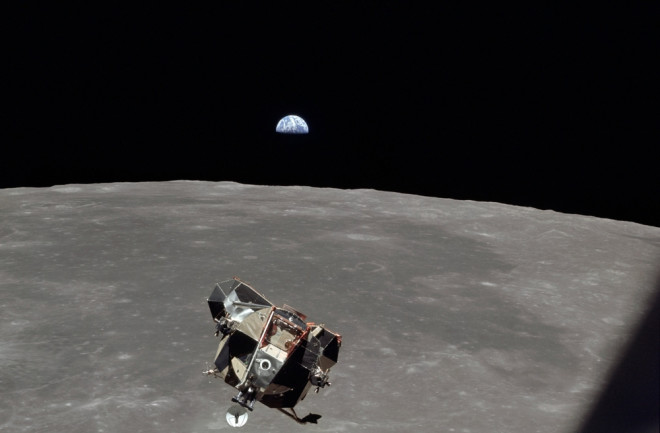
On July 21, 1969, Apollo 11’s Eagle lunar ascent stage lifted off from the surface of the Moon to rendezvous with the command module Columbia in orbit. After docking, Neil Armstrong and Buzz Aldrin clambered back into Columbia carrying 22 kilograms of lunar rock. The crew then closed the hatch and the command module returned to Earth.
Before leaving, though, it jettisoned Eagle, leaving the ascent module in a retrograde orbit some 125 kilometers above the lunar equator. NASA has always assumed that this orbit was unstable and that some time later, Eagle must have crashed into the lunar surface.
Now, a new analysis suggests that Eagle is still up there, in essentially the same orbit that Columbia left it in. “There exists some possibility that this machine might have reached an inert state, allowing it to remain in orbit to the present day,” says independent researcher James Meador. Indeed, the spacecraft might still be visible from Earth to anybody willing to look hard enough to find it.
Planetary geologists have long known that the Moon’s mass is not evenly distributed throughout its volume. Instead, underground concentrations of mass lead to tiny variations in the Moon’s gravitational field that make most lunar orbits unstable in the long term.
In 2012, NASA sent a pair of spacecraft called GRAIL to map the Moon’s gravitational field and this mission eventually created a detailed map of this varying field.
That gave Meador an idea. Nobody knows what happened to Eagle after NASA abandoned it. So why not use this map to work out how Eagle’s orbit must have decayed and where it might have eventually hit the lunar surface. That could point observers to the impact crater that is Eagle’s final resting place.
Deliberate Crashes
By contrast, the lunar ascent modules from Apollos 12, 14, 15, 16 and 17 were all deliberately crashed into the Moon to help calibrate seismometers that astronauts had left on the surface. Apollo 13 astronauts famously used their ascent module as a lifeboat to get back to Earth, where it burnt up in the atmosphere.
Meador began his task using an open-source program called the General Mission Analysis Tool developed by NASA and others. This models a spacecraft’s trajectory in any gravitational field and is widely used to simulate missions to Earth orbit, to the Moon, to Mars and beyond.
Meador loaded the program with GRAIL’s lunar gravitational field and then used it to work out what must have happened to Eagle after Columbia jettisoned it in 1969. The program models Eagle as a uniform sphere and includes the effect of numerous, small but relevant forces such as the gravitational pull of the Earth, the Sun and all the planets except Mercury.
At each point in time, it calculates the effect of all these forces to determine where the spacecraft will be at the next point in time and then repeats. In this way, it calculates how a spacecraft’s orbit changes over time.
It can even include the effect of solar radiation pressure. By running the program with and without this force, Meador found that this had little effect on Eagle’s orbit. Of course, this stability could be the result of the particular set of starting parameters for the spacecraft in the program — the time of jettison, the latitude, longitude and altitude, heading angle and so on. So Meador changed these parameters by small amounts to see what effect this would have on the long term stability of the orbit. Using 100 different random combinations of these parameters, “all results showed similar behavior,” he says.
Exploding Fuel
To his evident surprise, this implies that Eagle’s orbit is not unstable as had been assumed.
“These numerical experiments support the hypothesis that even with the uncertainty of the initial conditions, the true orbit of the Eagle exhibits long term stability, and the spacecraft would not have impacted the Moon due to gravitational effects,” concludes Meador.
However, the lunar module may have succumbed to other problems, given that it was designed to operate for a mission lasting only 10 days. For example, unburnt fuel can leak or explode. There are well documented cases of defunct satellites and spent rocket stages exploding in Earth's orbit when unspent fuel ignites. Eagle could have succumbed to a similar fate.
But if it has survived, then the spacecraft should be observable today, says Meador. Back in 2009, the Indian Space Research Organization lost contact with the Chandrayaan-1 lunar orbiter, a cube-shaped spacecraft less than half the size of Eagle.
And yet in 2016, scientists at NASA’s Jet Propulsion Laboratory in Pasadena found it again using radar aimed at a point in space just above the lunar surface where the spacecraft was expected to pass.
When it was lost, Chandrayaan-1 was in a polar orbit, passing above the North and South Poles. Sure enough, the spacecraft turned up as expected.
Meador says a similar technique could find Eagle. In this case, the spacecraft is in an equatorial orbit about 125 kilometers above the surface; aiming a radar just above the lunar limb could spot it. “Four judiciously chosen, two-hour observation periods should provide sufficient coverage to possibly relocate one of the most important artifacts in the history of space exploration,” he says.
Over to the radar scientists at JPL, should they have a few hours to spare. That would be a spectacular find.
Reference: Long-term Orbit Stability of the Apollo 11 “Eagle” Lunar Module Ascent Stage : arxiv.org/abs/2105.10088
- human spaceflight
- space exploration
- spaceflight
Already a subscriber?
Register or Log In

Keep reading for as low as $1.99!
Sign up for our weekly science updates.
Save up to 40% off the cover price when you subscribe to Discover magazine.
Founder and Editor Emeritus Eric M. Jones
Edited by Ken Glover
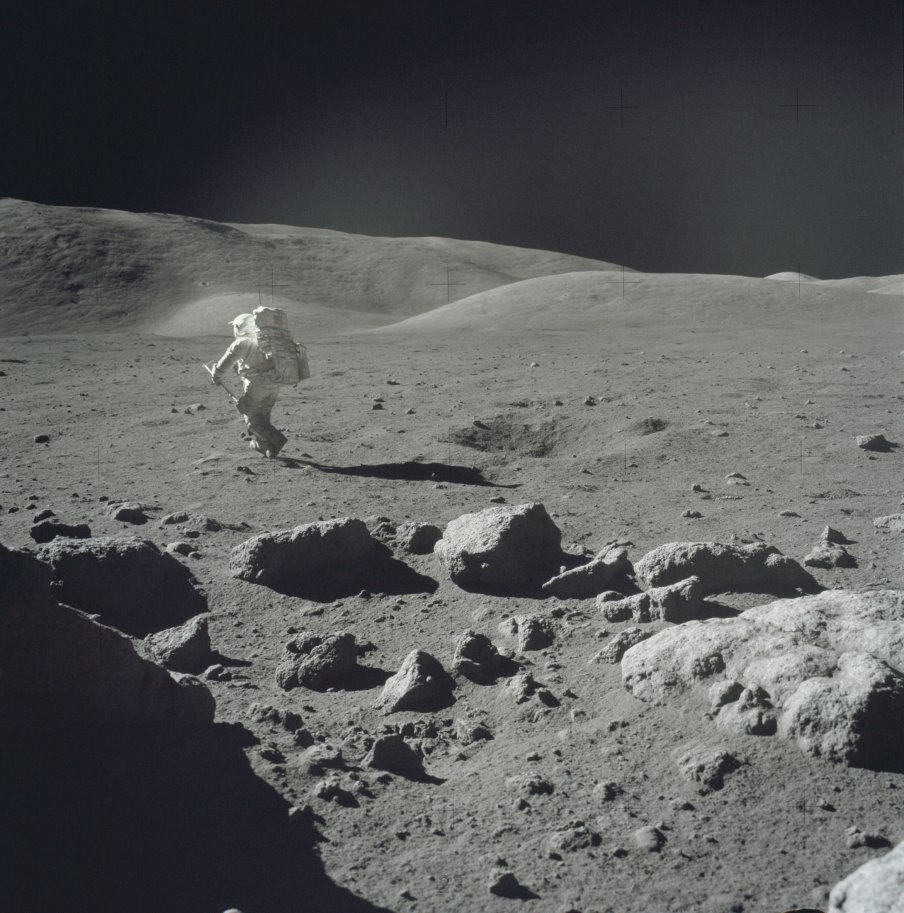
The Apollo Lunar Surface Journal is a record of the lunar surface operations conducted by the six pairs of astronauts who landed on the Moon from 1969 through 1972. The Journal is intended as a resource for anyone wanting to know what happened during the missions and why. It includes a corrected transcript of all recorded conversations between the lunar surface crews and Houston. The Journal also contains extensive, interwoven commentary by the Editor and by ten of the twelve moonwalking astronauts.
This December 2017 release of the Journal contains all of the text for the six successful landing missions as well as many photos, maps, equipment drawings, background documents, voice tracks, and video clips which, we hope, will help make the lunar experience more accessible and understandable.
The Journal is, in Neil Armstrong's words, a "living document" and is constantly being modified and updated. Please don't hesitate to let us know about errors. We want to get it right, but sometimes that can take a while. We would like to thank everyone for their help and patience. You may email the editors concerning typos, factual errors, or with general comments at:
The corrected transcript, commentary, and other text incorporated in the Apollo Lunar Surface Journal is protected by copyright. Individuals may make copies for personal use; but unauthorized production of copies for sale is prohibited. Unauthorized commercial use of copyright-protected material from the Apollo Lunar Surface Journal is prohibited; and the commercial use of the name or likeness of any of the astronauts without his express permission is prohibited.
The United States Government retains a non-exclusive, royalty-free license to publish or reproduce the published form of the Apollo Lunar Surface Journal, or to allow others to do so, for U.S. Government purposes.
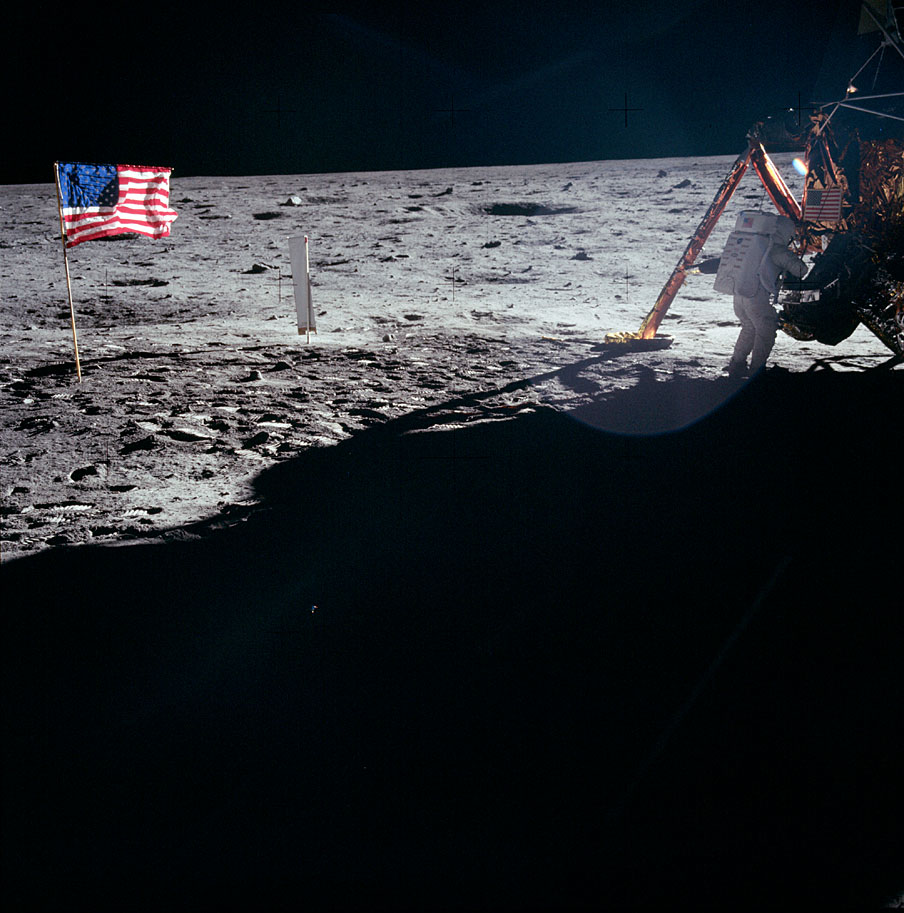
↓ Enter the Journal ↓
Page design by: Gordon Roxburgh , Brian Lawrence and Ken Glover .
NASA Host: Steve Garber
Copyright © 1995-2018 by Eric M. Jones. All rights reserved. Last revised 05 June 2018.
Get breaking news alerts from Newsday
Turn on notifications?
Desktop notifications are on | Turn off
You might be using private browsing or have notifications blocked. Please enable notifications or using normal browsing mode.
- Long Island
- Things to do
The Long Islanders who helped take America to the moon
Space race grumman gets contract.
“NASA announced Grumman has won the lunar module. And of course Bethpage went berserk.”— Sam Koeppel
On deadline Challenge accepted
“It actually got to a point where we were working so many hours that people were leaving their [work] areas filthy because we didn’t have an opportunity to do the cleaning.”— Mike Lisa
New frontier Designing a spacecraft

Newsday / Rod Eyer
Liftoff Launched into orbit

“We were not only amazed at what was going on, we were worried that something [ wrong ] would happen.”— Alan Contessa
Grummanites Their stories
How i became a grummanite.
Mike Lisa , assistant manager of volunteer services for the Cradle of Aviation Museum
Alan Contessa , Lunar Module Restoration Volunteer at the Cradle of Aviation Museum
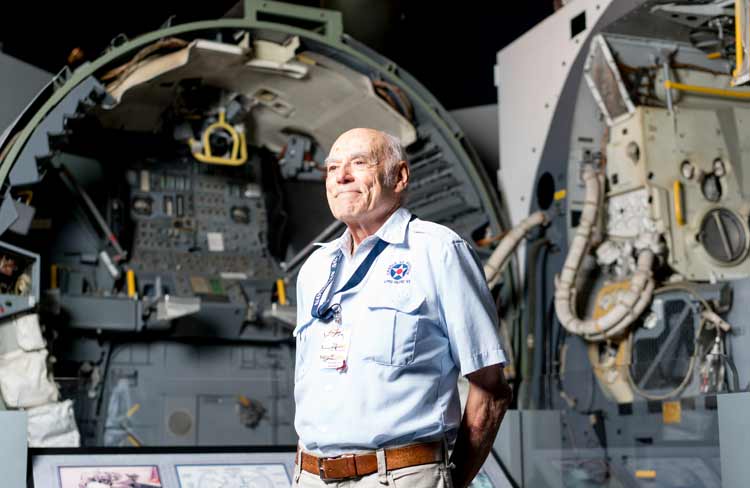
Sam Koeppel of Floral Park
Richard J. Gran
Ernest Finamore
AT THE SMITHSONIAN
Apollo lunar module gets a facelift.
/https://tf-cmsv2-smithsonianmag-media.s3.amazonaws.com/accounts/headshot/megan.png)
Megan Gambino
Senior Editor
/https://tf-cmsv2-smithsonianmag-media.s3.amazonaws.com/filer/lm-restoration-21.jpg)
As the 40th anniversary of the moon landing nears on July 20, curators and conservators at the National Air and Space Museum are polishing up the Apollo 11 artifacts. This morning, a three-day project began to replace the gold-colored, aluminized plastic film on the Apollo 11 lunar module, located on the museum's first floor.
Lunar landers were used on the descent to the lunar surface and served as a base while Apollo astronauts were on the moon. The landers were not meant to return to Earth. The museum's 8,650-pound, nearly 23-foot tall lander, LM-2 (shorthand for Lunar Excursion Module), was a test-vehicle, but a previous test of LM-1 aboard Apollo 5 in 1968 went off without a hitch. LM-2 remained earthbound and came to the museum in 1971.
The materials that cover the module, including the aluminized film, would help to protect its inner structure from temperature extremes and micrometeoroids. When I stopped by, interns in the museum's conservation department were on ladders shining the module's metal parts as Paul Fjeld, the contractor for the project, and Amanda Young, a museum specialist, worked on removing the foil, which they then used as templates for cutting the new sheets. Bits of gold foil littered the floor below. It was like Christmas morning for Allan Needell, curator in the division of space history.
"I've never seen what's underneath the foil, and I've been here 25 years," said Needell, who pointed out where an antenna, then covered, caused the foil to bulge.
Some repairs have been done to the LM-2 over the years, but this project, said Needell, is the "biggest and by far, the most conscientious."
"It's the Smithsonian's responsibility to preserve the authenticity of the original object as much as possible," he added. Fjeld, a space artist with NASA's art program who led a similar project on the LM-13 at the Cradle of Aviation Museum in Long Island, and built all the historically-accurate models used in Tom Hanks' HBO series "From the Earth to the Moon," was brought in to do the job. The conservation team is using only the original kinds of tape, foil and techniques.
"It's an exquisite piece of hardware of a sort we don't see much," said Needell. "People have seen the photograph of Neil Armstrong stepping off the ladder, but seeing the equipment creates some context." The LM-2 will soon look much like the Apollo 11 Eagle (LM-5) that set down at Tranquility Base in 1969 and made history.
If you drop by the museum today or tomorrow, you can see the team in action. And mark your calendar—there are several events scheduled to mark celebrate the moon landing.
The LM-2 will also be the subject of the "Object at Hand" column in Smithsonian magazine's September issue.
Get the latest on what's happening At the Smithsonian in your inbox.
/https://tf-cmsv2-smithsonianmag-media.s3.amazonaws.com/accounts/headshot/megan.png)
Megan Gambino | | READ MORE
Megan Gambino is a senior web editor for Smithsonian magazine.
Lunar Excursion Module Simulator (LEMS)
Built in 1965, the simulator is a crewed rocket-powered vehicle used to familiarize the Apollo astronauts with the handling characteristics of a lunar-landing vehicle. The simulator was built at Langley Research Center as part of the Lunar Landing Research Facility (LLRF) and is the original trainer used at the NASA Langley Research Center in the 1960s by Neil Armstrong, Edwin “Buzz” Aldrin, and 22 other astronauts who were preparing for their trip to the moon. The simulator, which weighs in at a hefty 8,900 pounds, allowed astronauts to experience piloting problems they would encounter in the last 150 feet of descent to the surface of the moon.

Suggested Searches
- Climate Change
- Expedition 64
- Mars perseverance
- SpaceX Crew-2
- International Space Station
- View All Topics A-Z
Humans in Space
Earth & climate, the solar system, the universe, aeronautics, learning resources, news & events.
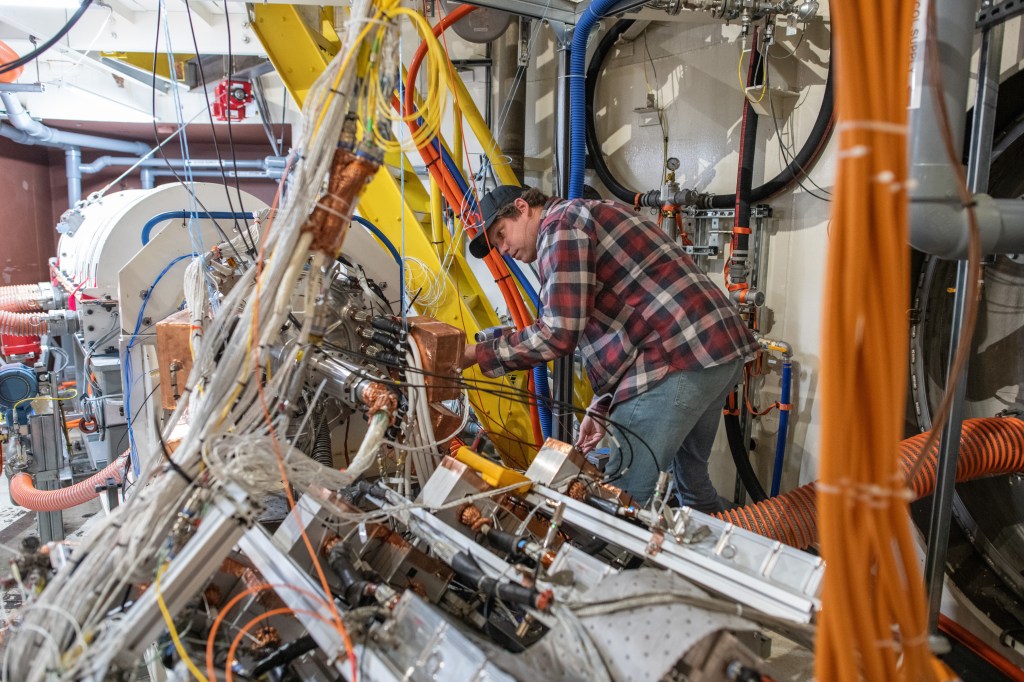
NASA, MagniX Altitude Tests Lay Groundwork for Hybrid Electric Planes
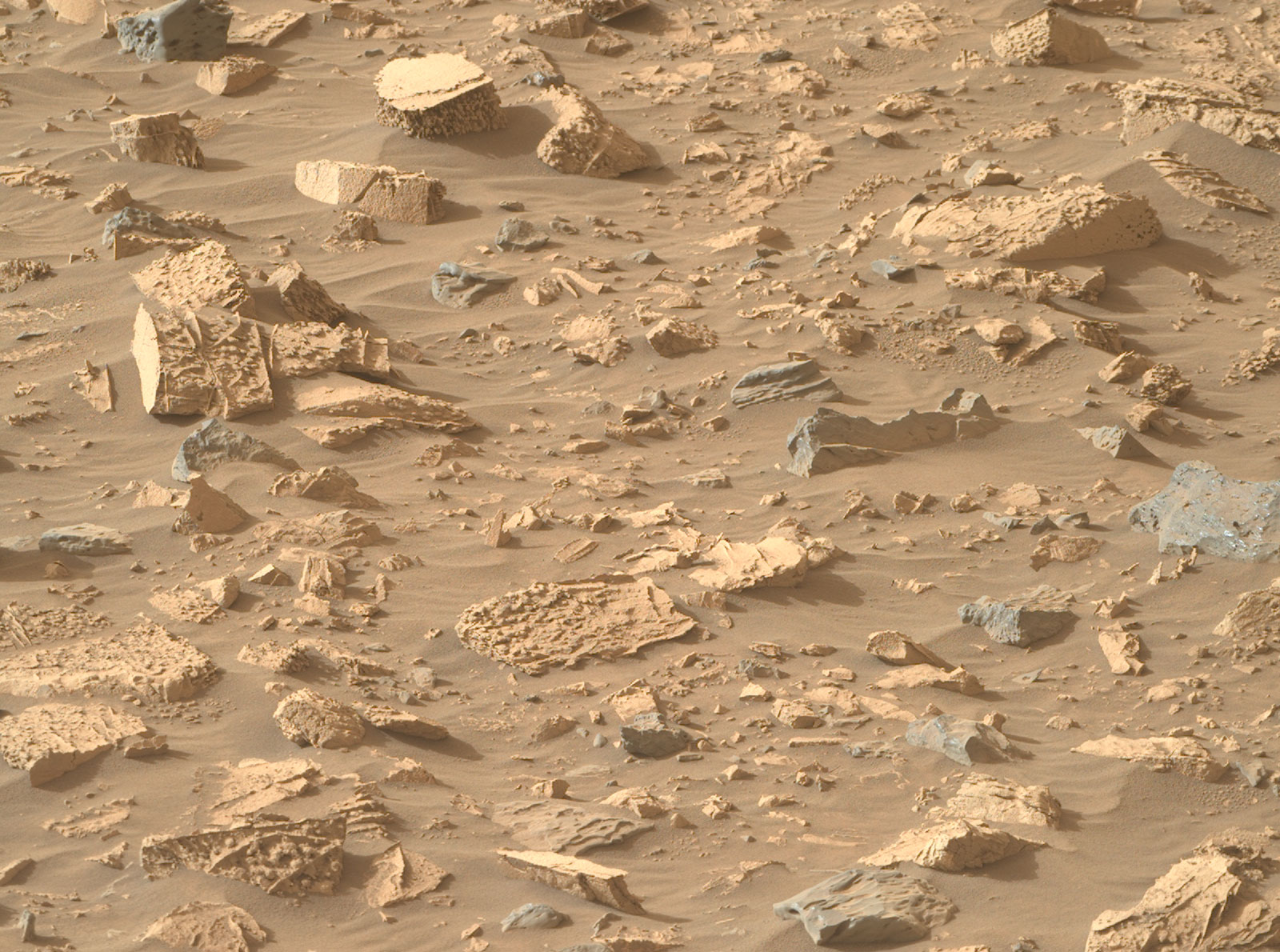
Perseverance Finds Popcorn on Planet Mars
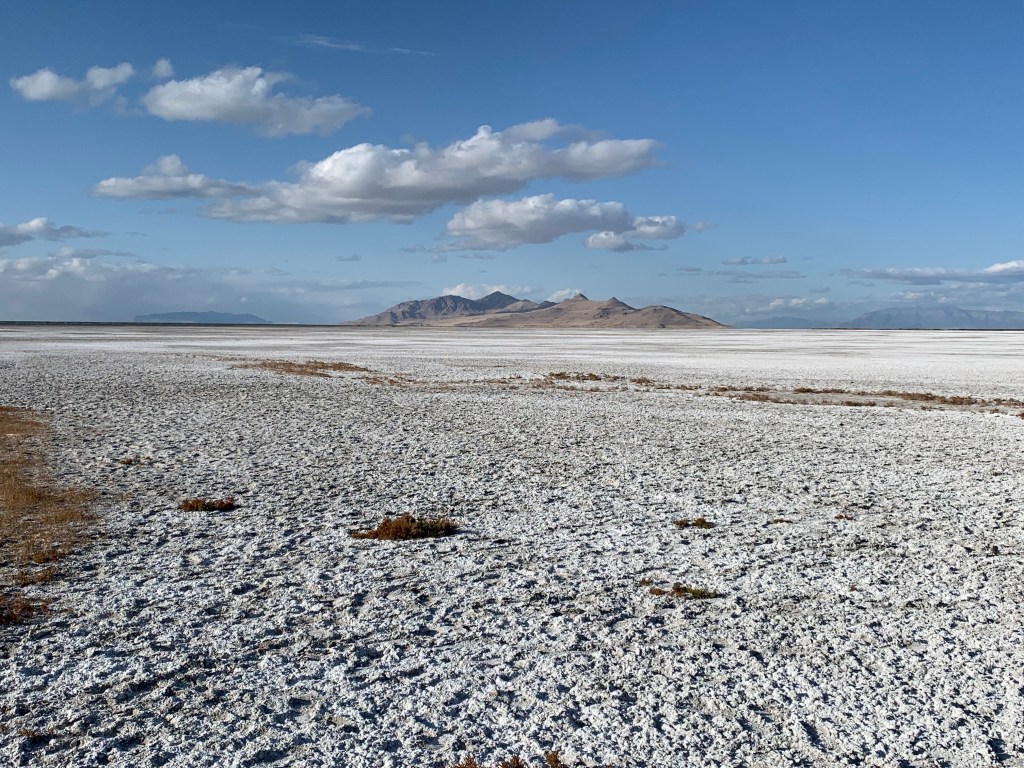
NASA Satellites Find Snow Didn’t Offset Southwest US Groundwater Loss
- Search All NASA Missions
- A to Z List of Missions
- Upcoming Launches and Landings
- Spaceships and Rockets
- Communicating with Missions
- James Webb Space Telescope
- Hubble Space Telescope
- Why Go to Space
- Commercial Space
- Destinations
- Living in Space
- Explore Earth Science
- Earth, Our Planet
- Earth Science in Action
- Earth Multimedia
- Earth Science Researchers
- Pluto & Dwarf Planets
- Asteroids, Comets & Meteors
- The Kuiper Belt
- The Oort Cloud
- Skywatching
- The Search for Life in the Universe
- Black Holes
- The Big Bang
- Dark Energy & Dark Matter
- Earth Science
- Planetary Science
- Astrophysics & Space Science
- The Sun & Heliophysics
- Biological & Physical Sciences
- Lunar Science
- Citizen Science
- Astromaterials
- Aeronautics Research
- Human Space Travel Research
- Science in the Air
- NASA Aircraft
- Flight Innovation
- Supersonic Flight
- Air Traffic Solutions
- Green Aviation Tech
- Drones & You
- Technology Transfer & Spinoffs
- Space Travel Technology
- Technology Living in Space
- Manufacturing and Materials
- Science Instruments
- For Kids and Students
- For Educators
- For Colleges and Universities
- For Professionals
- Science for Everyone
- Requests for Exhibits, Artifacts, or Speakers
- STEM Engagement at NASA
- NASA's Impacts
- Centers and Facilities
- Directorates
- Organizations
- People of NASA
- Internships
- Our History
- Doing Business with NASA
- Get Involved
- Aeronáutica
- Ciencias Terrestres
- Sistema Solar
- All NASA News
- Video Series on NASA+
- Newsletters
- Social Media
- Media Resources
- Upcoming Launches & Landings
- Virtual Events
- Sounds and Ringtones
- Interactives
- STEM Multimedia
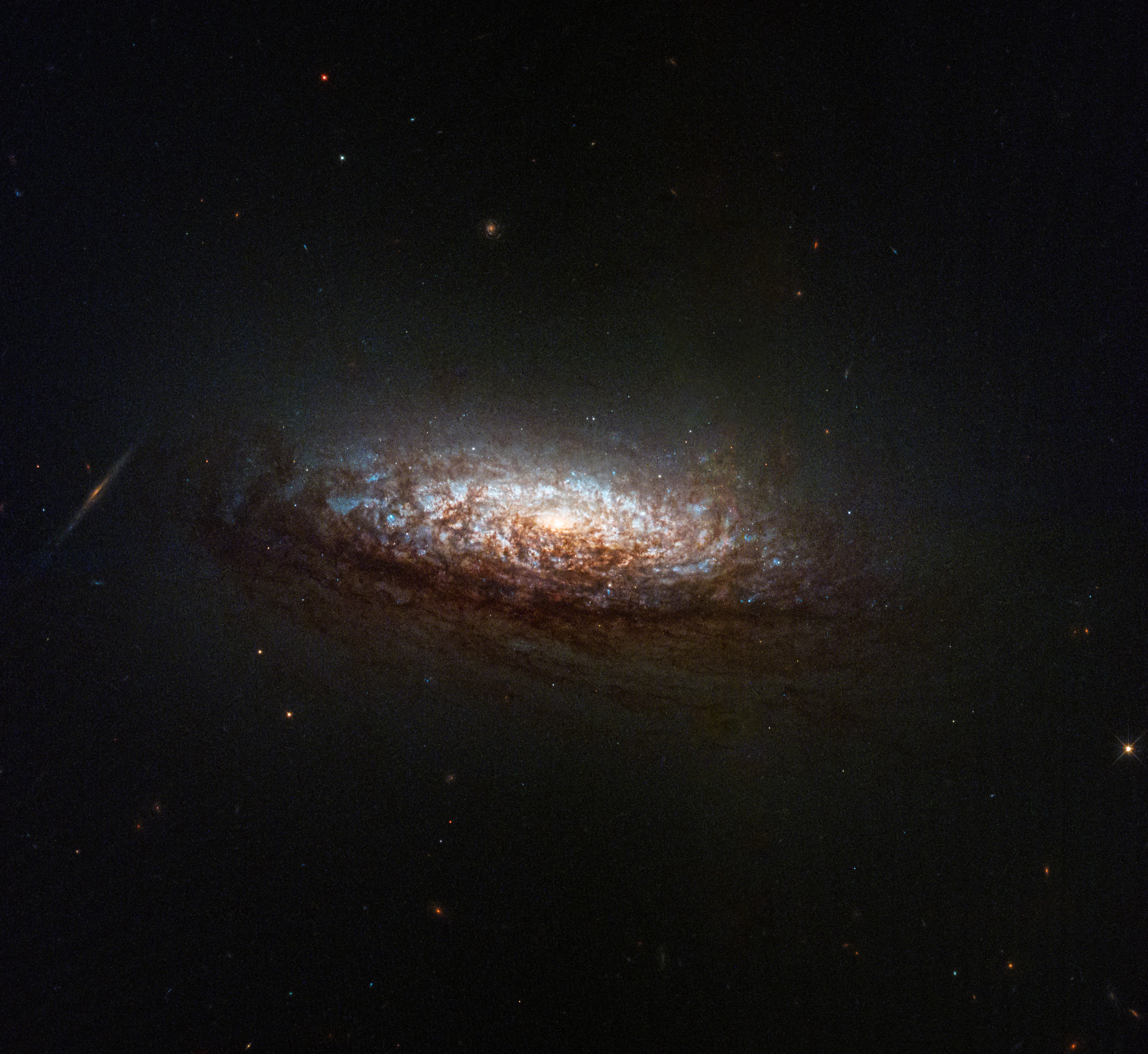
NASA Releases Hubble Image Taken in New Pointing Mode

Investigating the Origins of the Crab Nebula With NASA’s Webb

Lakita Lowe: Leading Space Commercialization Innovations and Fostering STEM Engagement
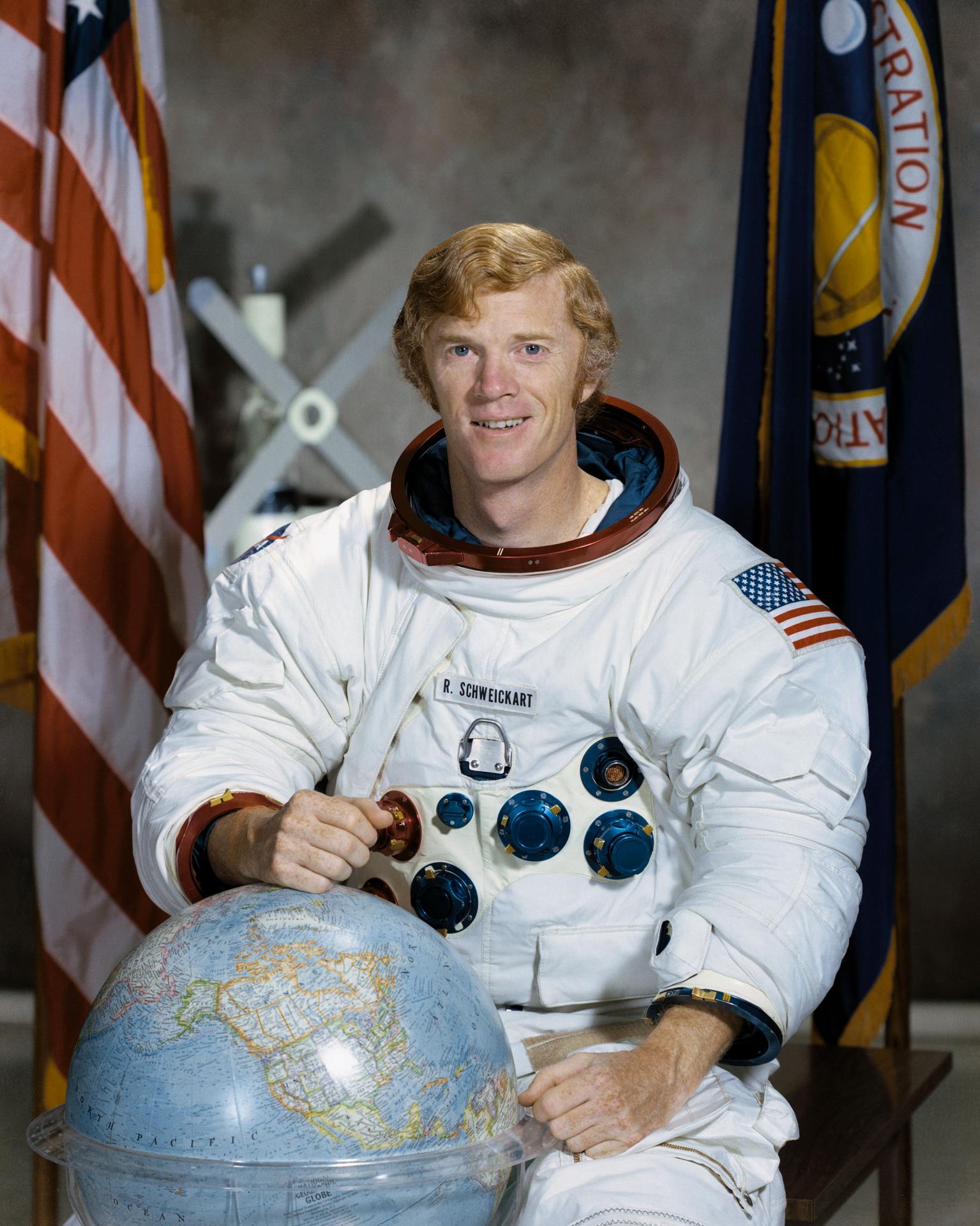
Former Astronaut Russell L. “Rusty” Schweickart

NASA’s Repository Supports Research of Commercial Astronaut Health
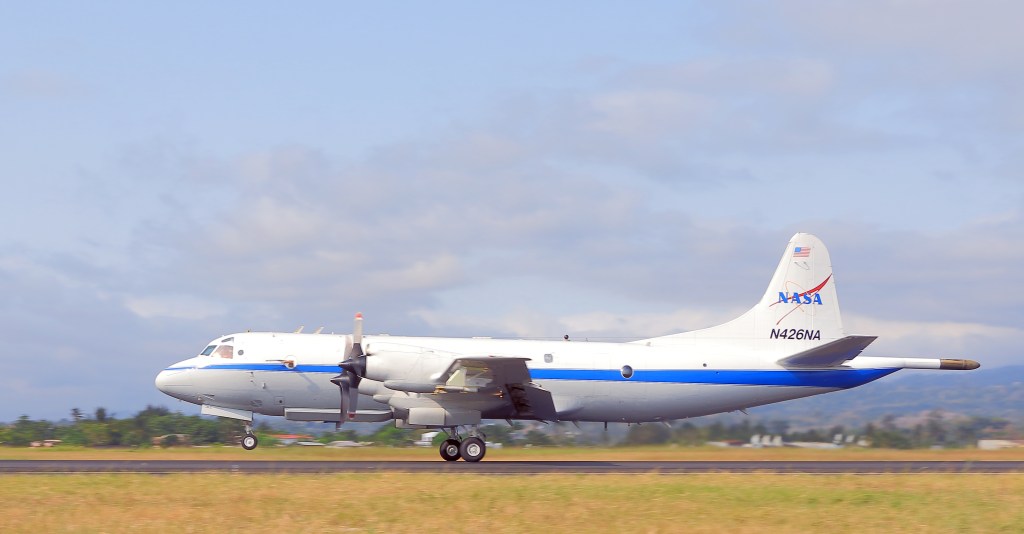
NASA-Led Mission to Map Air Pollution Over Both U.S. Coasts
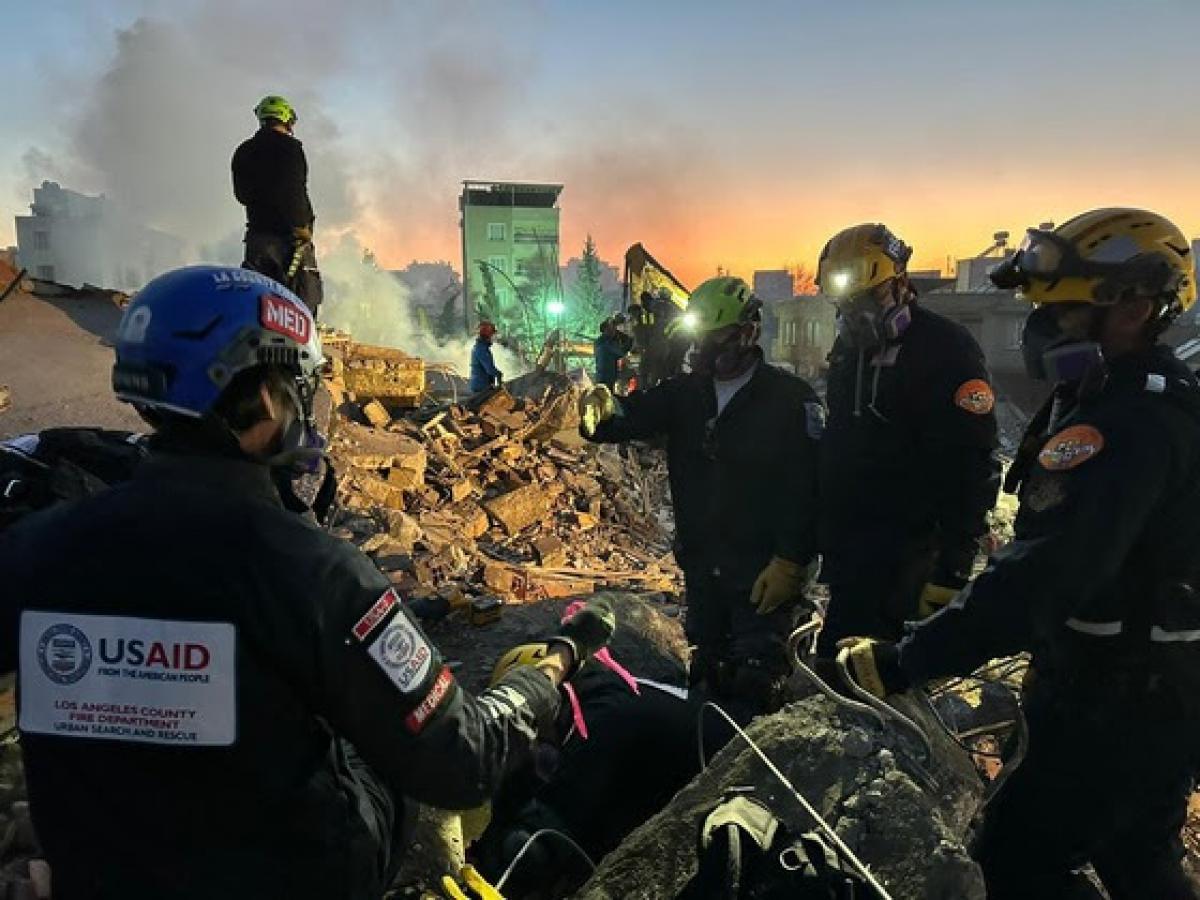
NASA Announces New System to Aid Disaster Response

Tropical Solstice Shadows
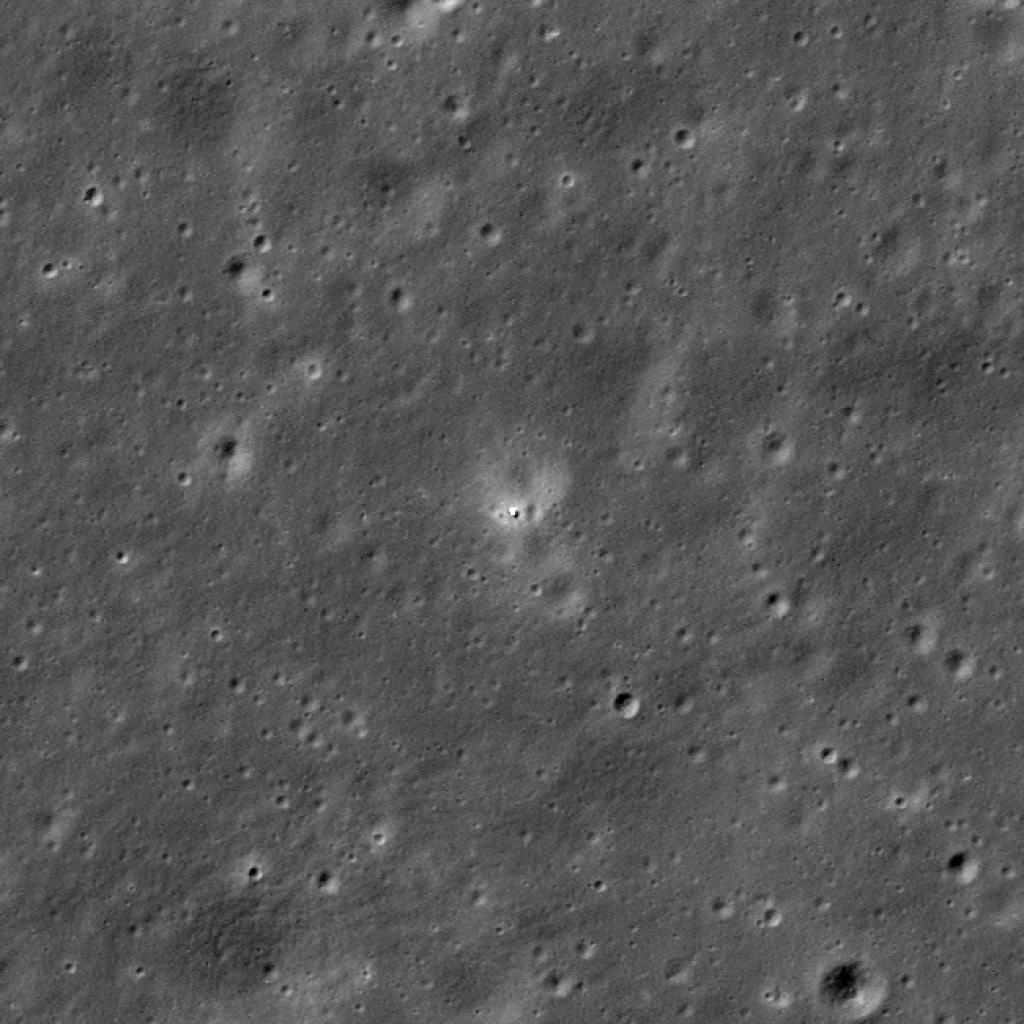
NASA’s LRO Spots China’s Chang’e 6 Spacecraft on Lunar Far Side

The Next Full Moon is the Strawberry Moon

Hubble Observes a Cosmic Fossil

Happy Birthday, Redshift Wrangler!
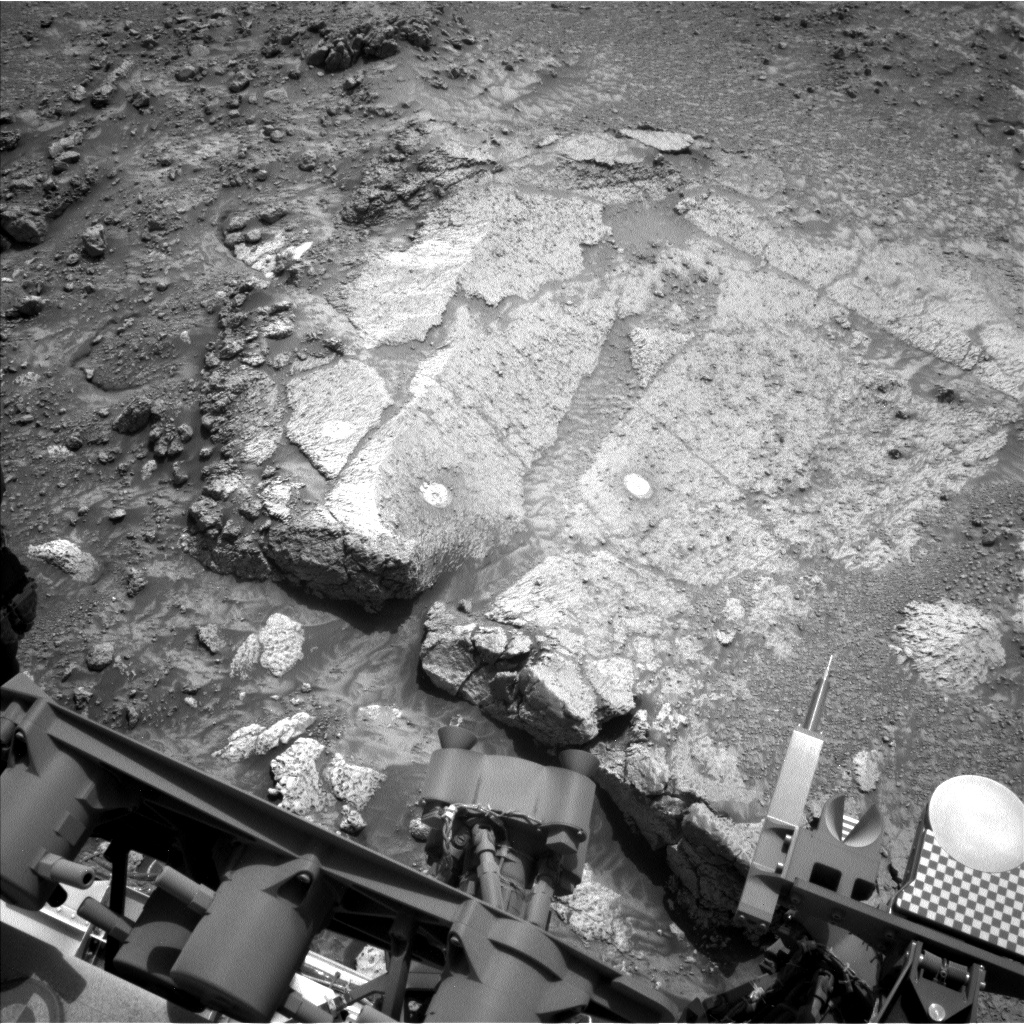
Sols 4216-4218: Another ‘Mammoth’ Plan!
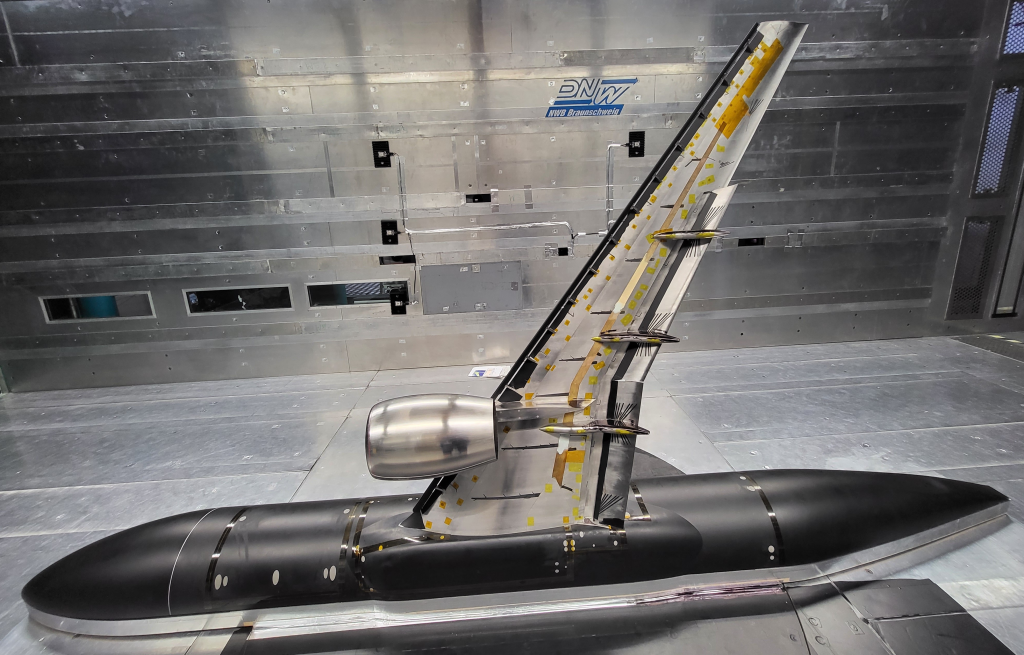
Globetrotting NASA Research Model Increases Accuracy

ARMD Solicitations
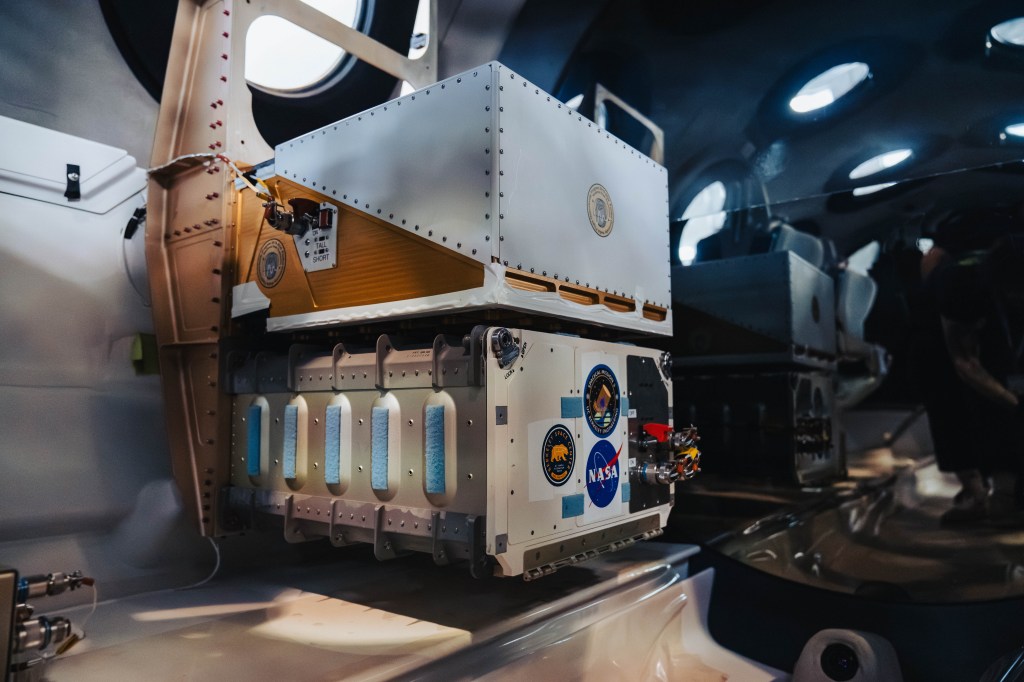
Flight Test Sheds New Light on In-Space 3D Printing, Propellant Slosh

NASA’s Roman Mission Gets Cosmic ‘Sneak Peek’ From Supercomputers
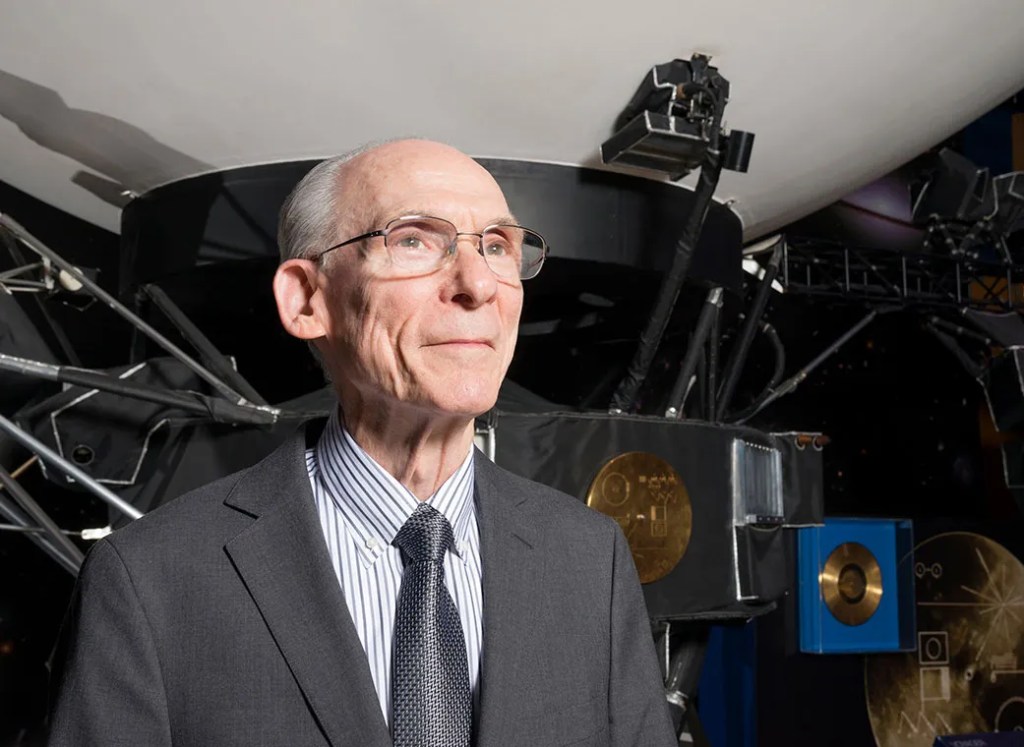
Ed Stone, Former Director of JPL, Voyager Project Scientist, Dies

Slow Your Student’s ‘Summer Slide’ and Beat Boredom With NASA STEM
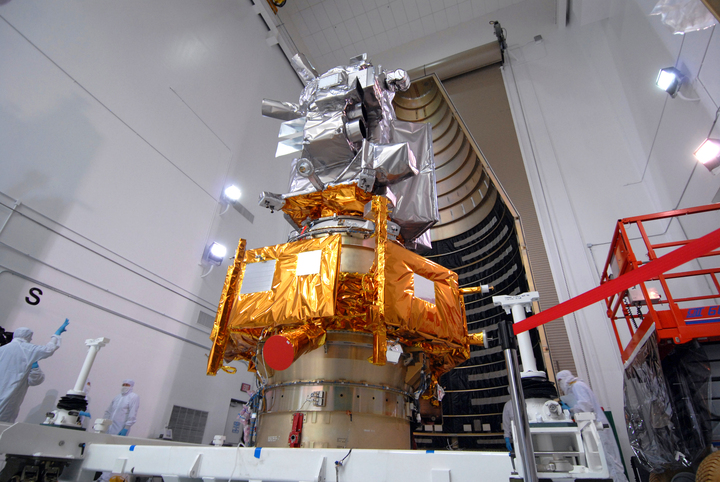
15 Years Ago: Lunar Reconnaissance Orbiter Begins Moon Mapping Mission
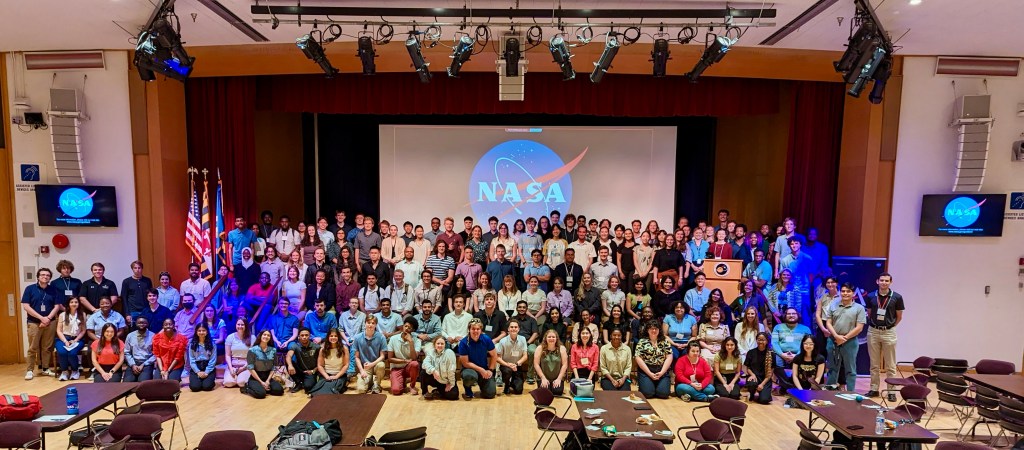
NASA Interns Blast Off for Their First Week at Goddard
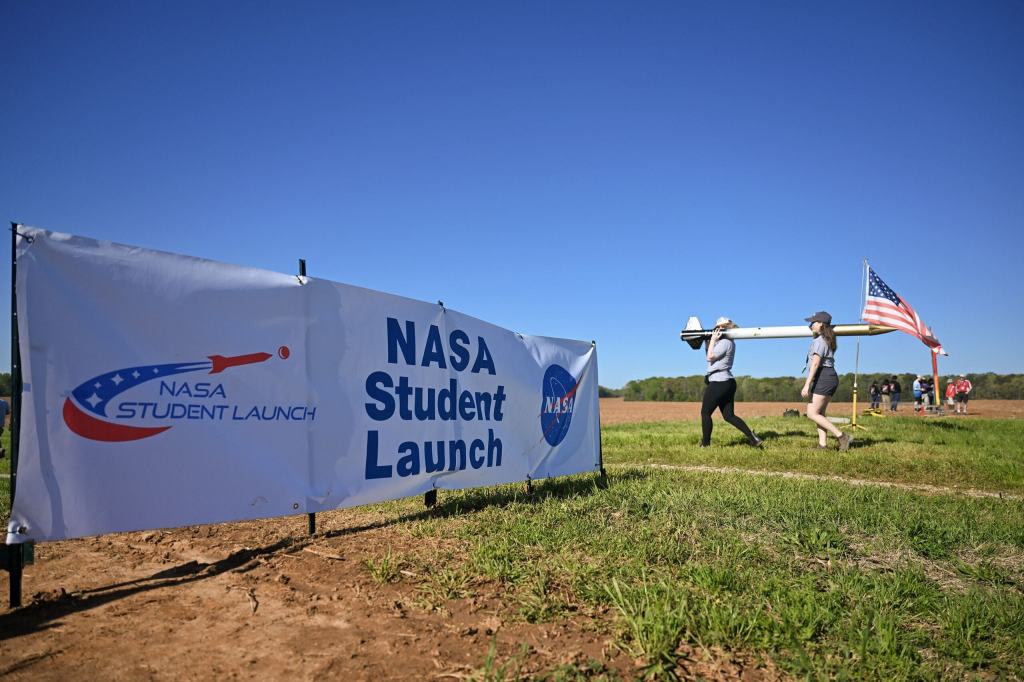
NASA Announces Winners of 2024 Student Launch Competition

Astronauta de la NASA Frank Rubio

Diez maneras en que los estudiantes pueden prepararse para ser astronautas

Astronauta de la NASA Marcos Berríos
Nasa releases restored apollo 11 moonwalk video.

Editor’s note: This feature was originally published July 16, 2009. It is republished in conjunction with the 50th anniversary of the Apollo 11 mission .
July 16, 2009 feature:
NASA released Thursday newly restored video from the July 20, 1969, live television broadcast of the Apollo 11 moonwalk. The release commemorates the 40th anniversary of the first mission to land astronauts on the moon.
The initial video release, part of a larger Apollo 11 moonwalk restoration project, features 15 key moments from the historic lunar excursion of Neil Armstrong and Buzz Aldrin. A team of Apollo-era engineers who helped produce the 1969 live broadcast of the moonwalk acquired the best of the broadcast-format video from a variety of sources for the restoration effort. These included a copy of a tape recorded at NASA’s Sydney, Australia, video switching center, where down-linked television from Parkes and Honeysuckle Creek was received for transmission to the U.S.; original broadcast tapes from the CBS News Archive recorded via direct microwave and landline feeds from NASA’s Johnson Space Center in Houston; and kinescopes found in film vaults at Johnson that had not been viewed for 36 years.
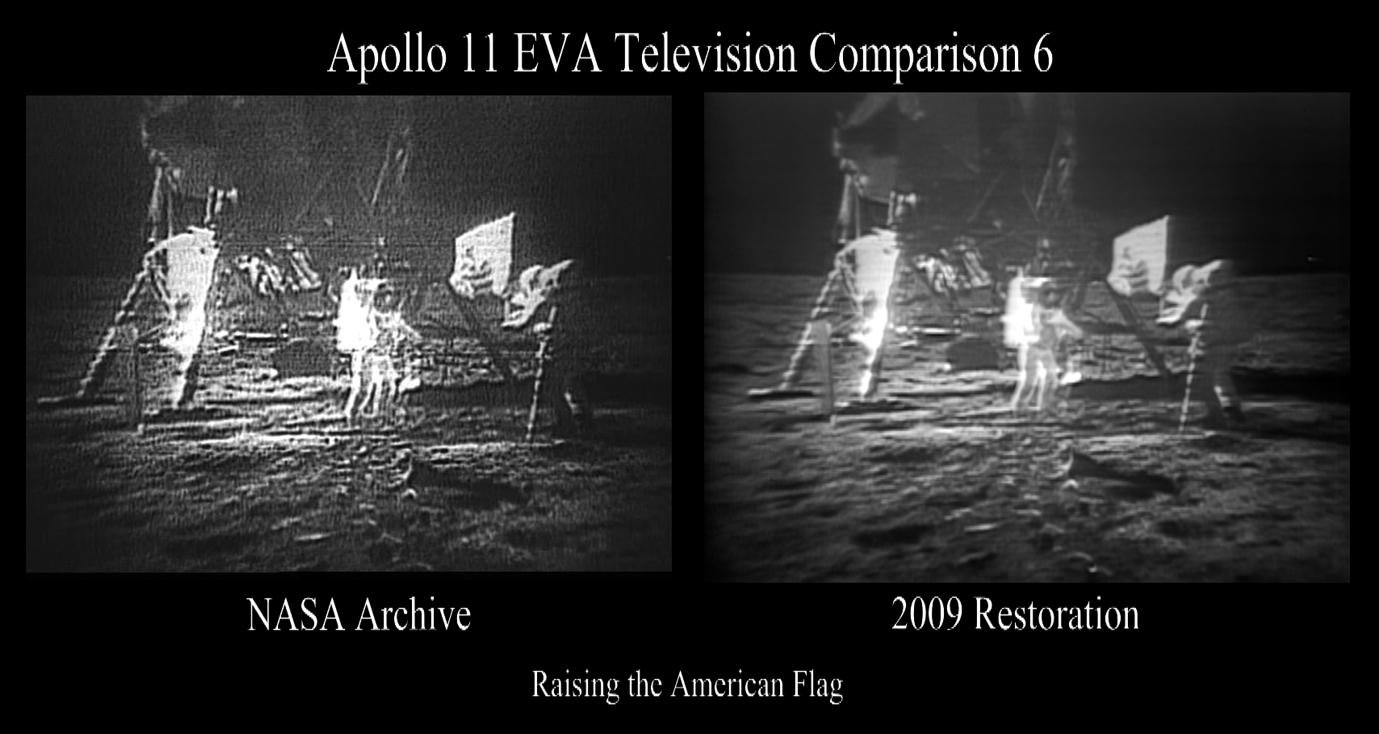
Related: Apollo 11 Partial Restoration HD Videos “The restoration is ongoing and may produce even better video,” said Richard Nafzger, an engineer at NASA’s Goddard Space Flight Center in Greenbelt, Md., who oversaw television processing at the ground tracking sites during Apollo 11. “The restoration project is scheduled to be completed in September and will provide the public, future historians, and the National Archives with the highest quality video of this historic event.”
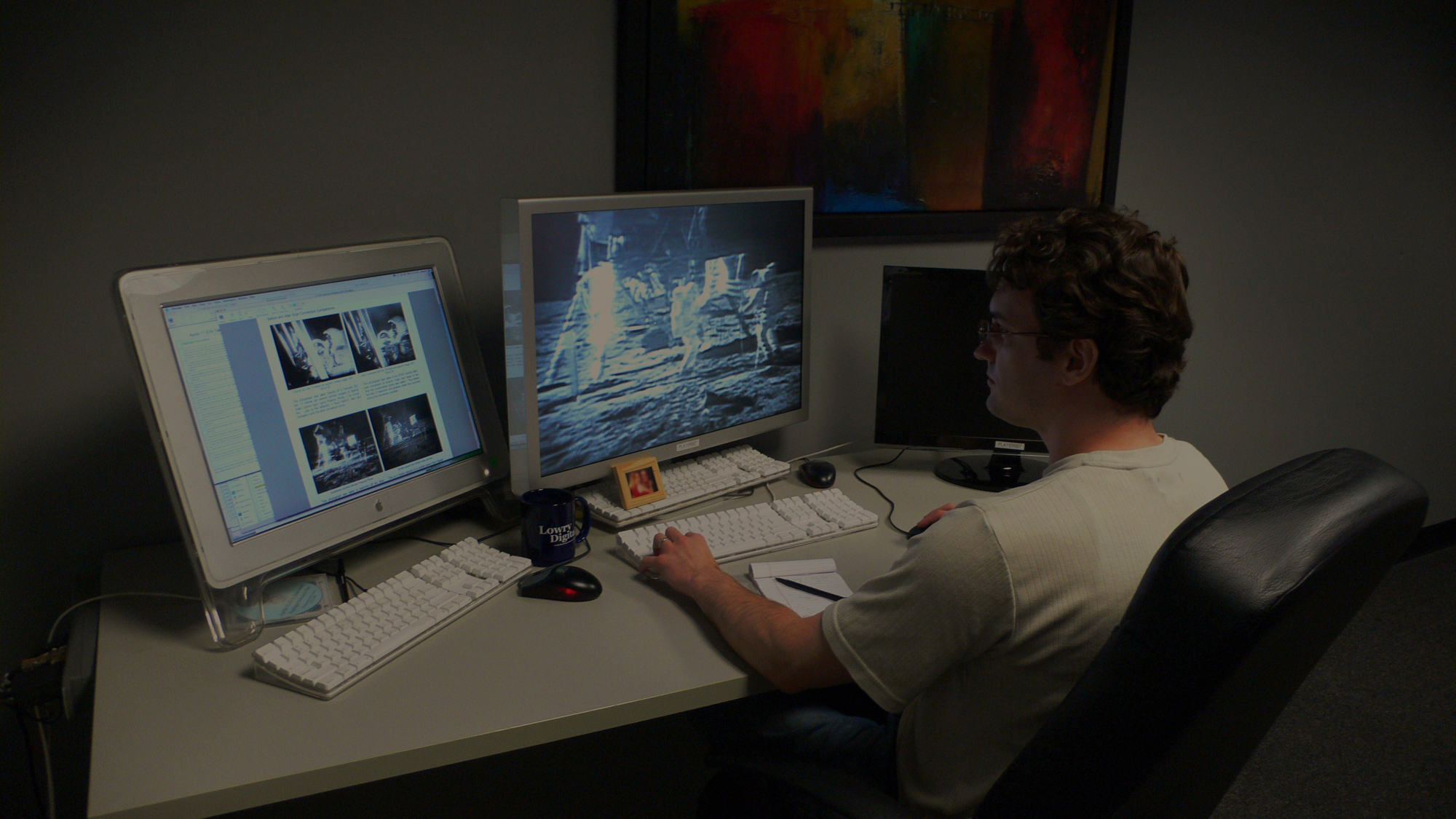
NASA contracted with Lowry Digital of Burbank, Calif., which specializes in restoring aging Hollywood films and video, to take the highest quality video available from these recordings, select the best for digitization, and significantly enhance the video using the company’s proprietary software technology and other restoration techniques. Under the initial effort, Lowry restored 15 scenes representing the most significant moments of the three and a half hours that Armstrong and Aldrin spent on the lunar surface. NASA released the video Thursday at a news conference at the Newseum in Washington. On July 20, 1969, as Armstrong made the short step off the ladder of the Lunar Excursion Module onto the powdery lunar surface, a global community of hundreds of millions of people witnessed one of humankind’s most remarkable achievements live on television. The black and white images of Armstrong and Aldrin bounding around the moon were provided by a single small video camera aboard the lunar module. The camera used a non-standard scan format that commercial television could not broadcast. NASA used a scan converter to optically and electronically adapt these images to a standard U.S. broadcast TV signal. The tracking stations converted the signals and transmitted them using microwave links, Intelsat communications satellites, and AT&T analog landlines to Mission Control in Houston. By the time the images appeared on international television, they were substantially degraded. At tracking stations in Australia and the United States, engineers recorded data beamed to Earth from the lunar module onto one-inch telemetry tapes. The tapes were recorded as a backup if the live transmission failed or if the Apollo Project needed the data later. Each tape contained 14 tracks of data, including bio-medical, voice, and other information; one channel was reserved for video. A three-year search for these original telemetry tapes was unsuccessful. A final report on the investigation is expected to be completed in the near future and will be publicly released at that time. Information and materials for the July 16 media briefing on the Apollo footage can be found here: https://www.nasa.gov/mission_pages/apollo/40th/apollo11_conference.html NASA Television will provide an HD video feed of the Apollo footage hourly from 12 – 7 p.m. on July 16 and 17. Each feed is one hour. For NASA TV streaming video, downlink and schedule information, visit: https://www.nasa.gov/ntv A copy of the newly restored scenes from the Apollo 11 restoration effort can be found at: https://www.nasa.gov/multimedia/hd/apollo11.html

Apollo Lunar Module Structural Test Model
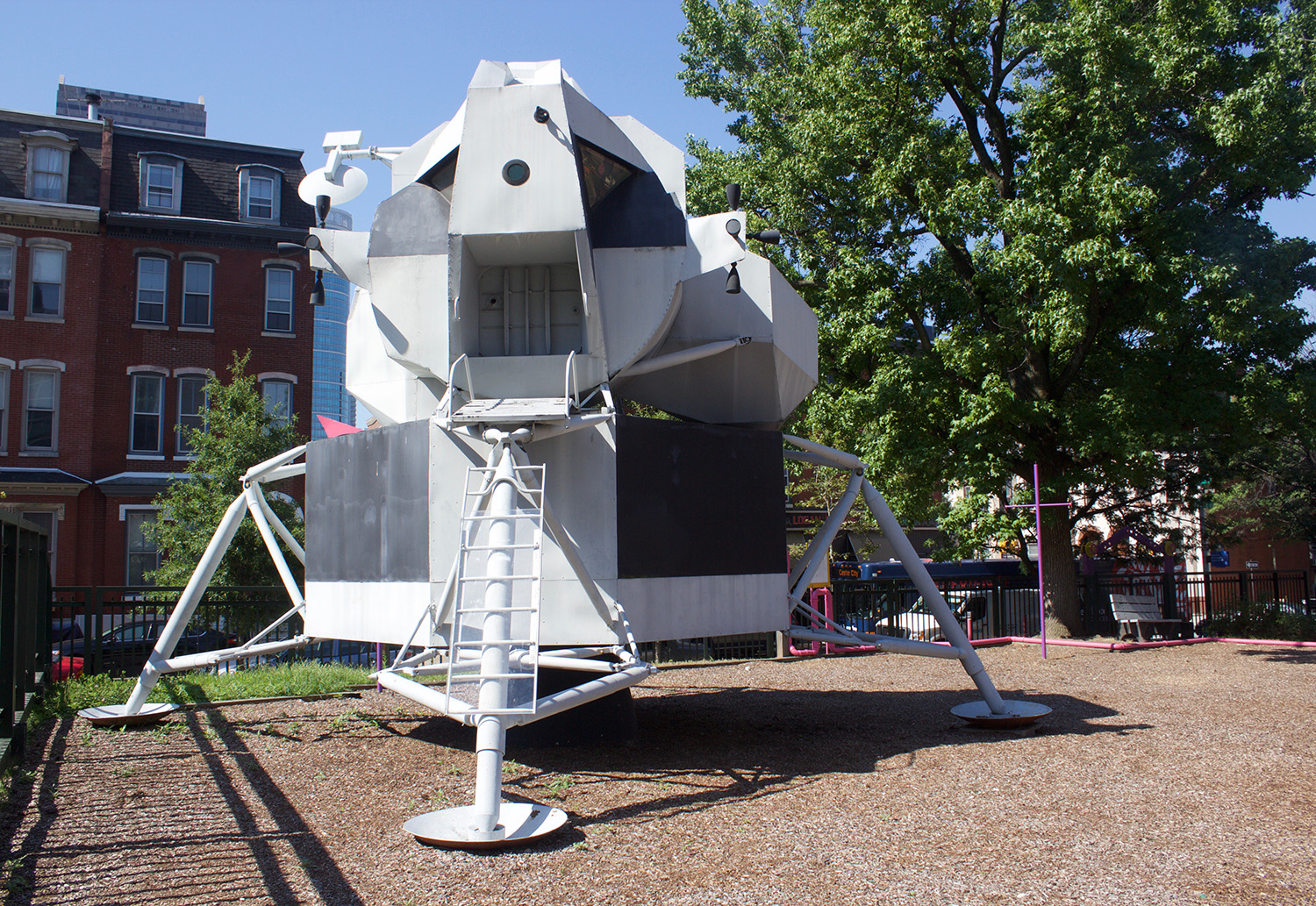
Positioned behind The Franklin Institute at the corner of 21st Street and Race Street in Philadelphia is a unique artifact that dates to the height of the Space Race and has particular importance in the legacy of NASA’s Apollo program that successfully landed twelve individuals on the Moon between 1969 and 1972.
On loan from the Smithsonian National Air and Space Museum , The Apollo Lunar Module (LM) Structural Test Model manufactured by Grumman Aerospace has resided in our Science Park since 1976 and is a full-scale representation of the spacecraft that was used by NASA to conduct the lunar landings of Apollo 11, Apollo 12, Apollo 14, Apollo 15, Apollo 16 and Apollo 17.
This structural test model was not built to be flown to the Moon. As the Apollo Lunar Module was the first manned spacecraft to be designed exclusively for use outside of the Earth’s atmosphere, which led to a number of unique challenges in its design. The LM needed to be compact and use house of the most sophisticated equipment of its time, but, in the absence of air resistance in space and on the Moon, it did not need to be aerodynamic at all. The object at The Franklin Institute was, instead, used by the engineers as they experimented with the design of the module and how it would eventually fit into the Saturn V Rocket and make its way 238,900 miles (384,472 km) to the Moon.
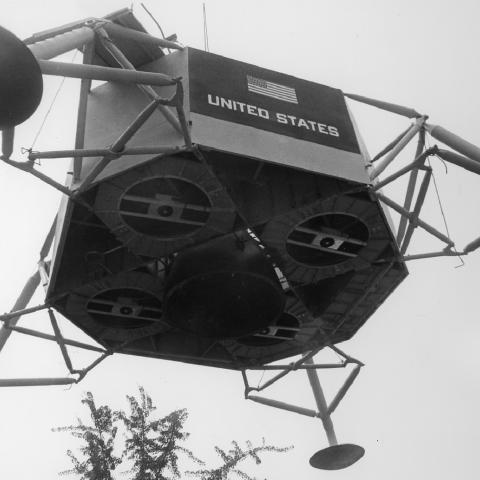
Weighing in at 33,000 pounds (14,900 kg), The Apollo Lunar Module had 235 cubic feet (6.7 cubic meters) of interior space for a crew of two astronauts. These battery powered spacecraft were designed for 75 hours of use on each flight.
The upper part of the LM, known as the Ascent Stage, would have housed the crew cabin, controls, air, water and the ascent engine that would launch the astronauts back to rendez-vous with the Command Module that would take them back towards Earth. The official designation of our structural model is LTA-3A . As the engineers were developing the Apollo Lunar Module, this ascent stage was used in structural integrity tests.
The lower part of the spacecraft is the Descent Stage where science equipment and support materials were stored in addition to the LM’s landing gear and, in the case of Apollo 15, 16 and 17, it was in the Descent Stage where the Lunar Roving Vehicle was stored. Parts of the descent stage for our lunar module, designated LTA-3DR/1 , was possibly intended for use in flight as part of LM-6, but instead used for testing and engineering the spacecraft that would eventually travel to the Moon.
Of the ten Apollo Lunar Modules that flew in space, none returned to Earth. The Descent Stages all remain on the Moon where they landed and the ascent stages were either intentionally crashed onto the lunar surface, burned up in the Earth’s atmosphere or, in the case of the LM from the Apollo 10 mission, remains in a solar orbit. Apollo Lunar Modules on view in museums today are either replicas, objects like ours that were created as part of the engineering process, or were built for further lunar missions that ultimately did not take place. The Apollo Lunar Module was flown by each mission’s Commander. The Lunar Module Pilot was tasked with monitoring the equipment and providing the Commander with all the information needed to fly the spacecraft. After separating from the Command Module (CM), the initial lunar landing approach was flown by computer using Doppler radar during a 30 second burn to reduce speed and decrease altitude to 50,000 feet (15,240 meters), 260 miles (418.5 kilometers) from the landing site. The next burn brought forward and vertical velocity to near zero with the astronauts on their backs. At 700 feet ( 213 meters) altitude and 2000 feet (610 meters) from the landing target the spacecraft was tipped up so the astronauts could see the intended landing target and manual control was enabled for the commander to make any necessary corrections. Probes measuring 5.5 feet (1.7 meters) extended beneath 3 of the 4 footpads and would indicate when surface contact was made and would initiate engine shutdown. The Ascent Engine had to fire just once – to lift the astronauts off the surface of the moon to rendezvous with the Command Module for the return trip to earth. If the Ascent Engine didn’t fire, those astronauts would have been marooned on the moon. Fortunately, The Apollo Lunar Module performed perfectly on each mission; it was the only flight component to not suffer a failure of some type.
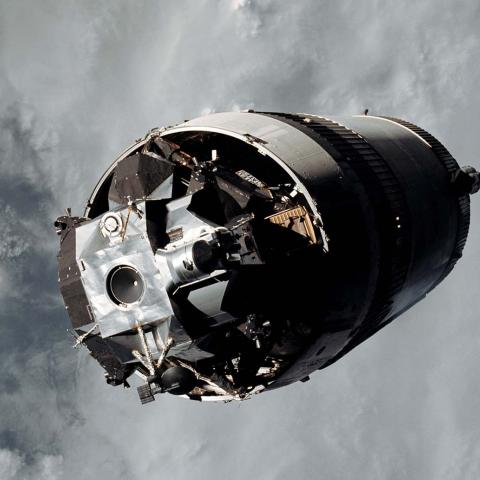
A group of Grumman Aerospace retirees and employees volunteered their time and labor to rebuild this Apollo Lunar Module Engineering Model for display at The Franklin Institute. The LM restoration team dubbed themselves "The Spacecats" just for this project. Another example of their versatile restorative skills—a U.S. Navy/Grumman F4F Wildcat , a World War II fighter airplane, that is on view in the Smithsonian National Air and Space Museum in Washington, D.C.
The Restoration Team consisted of the following Grumman employees and retirees: William Adams, George Black, Charles Chlanda, Helen Chlanda, Fred Ciento, John DuDonis, Vinnie Emanuele, Anthony Ferrarioli, Milt Guttenberger, Gus Henriksen, Chris Herrnkind, John Kacinski, John Kost, William Murdoch, Joe Oliver, Joe Riccobono, Charles Salerno, George Smith, Charles Staffeldt, Sid Steele, and Joe Stryjewski. Project Director: Jake Bussolini; Consulting Engineer: Bob Specht; Administrative Assistance: Erwin McCalla, Steve Kiss, and Karl Watjen.
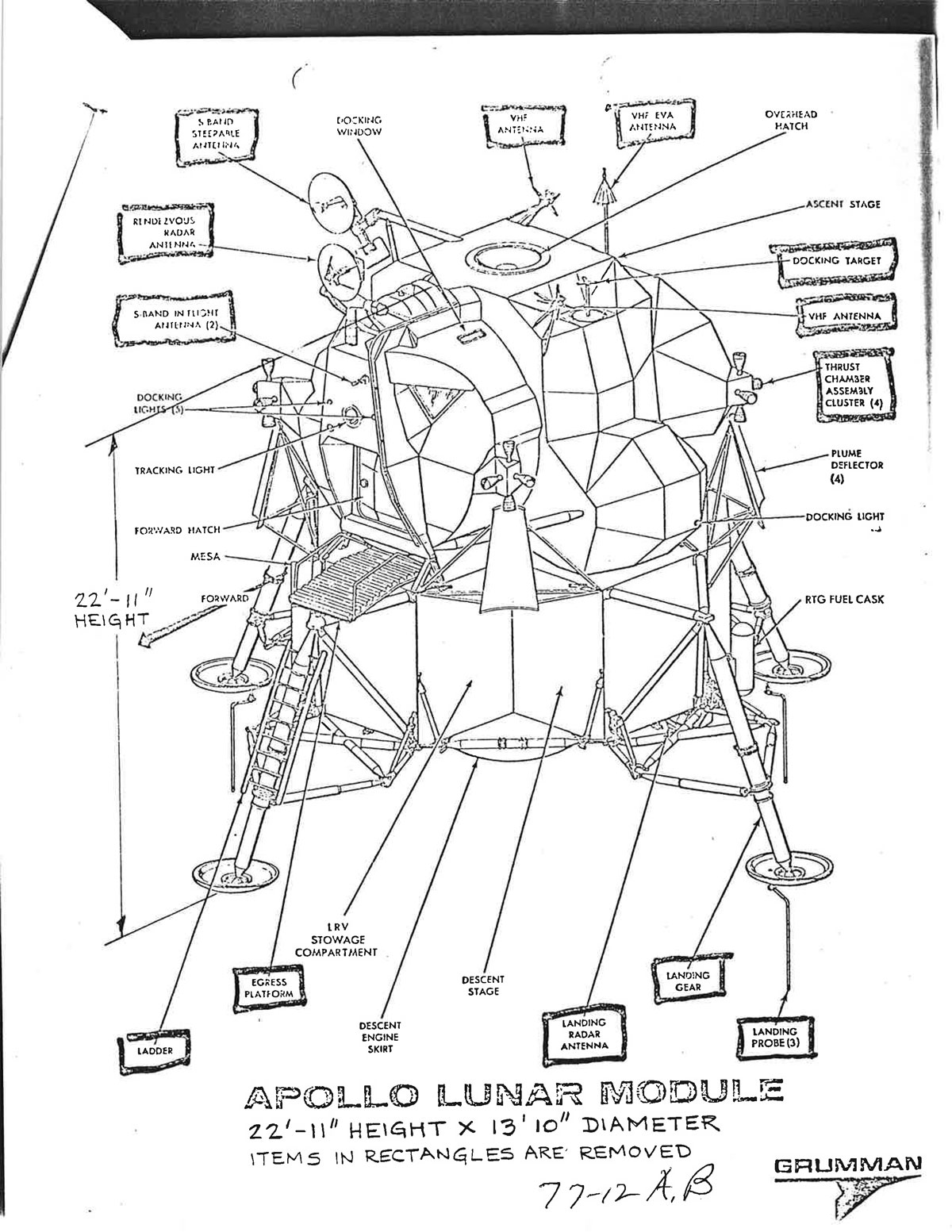
The Grumman Corporation was founded on December 6, 1929 and had its headquarters in on Long Island in Bethpage, New York, where the LMs were manufactured. Grumman merged with the Northrop Corporation in 1994 to form Northrop Grumman and, in addition to numerous military and civilian aircraft, the company is also well known as the manufacturer of the Grumman LLV, which is the most common vehicle used to deliver mail by the United States Postal Service.
In addition to the Apollo Lunar Module Engineering Model, The Franklin Institute is home to an actual Moon Rock that was collected during the Apollo 15 mission and a variety of objects relating to space exploration that are on view in our Space Command exhibit.

Learn more about science of space with our astronomy resources page.

Look to the sky and discover the wonders of outer space in The Franklin Institute's Space Command exhibit!
- Buy Tickets
- TFI Transformation
- Accessibility
- Frequently Asked Questions
- Itineraries
- Daily Schedule
- Getting Here
- Where to Eat & Stay
- All Exhibits & Experiences
- The Art of the Brick
- Wondrous Space
- Science After Hours
- Heritage Days
- Events Calendar
- Staff Scientists
- Benjamin Franklin Resources
- Scientific Journals of The Franklin Institute
- Professional Development
- The Current: Blog
- About Awards
- Ceremony & Dinner
- Sponsorship
- The Class of 2024
- Call for Nominations
- Committee on Science & The Arts
- Next Generation Science Standards
- Title I Schools
- Neuroscience & Society Curriculum
- STEM Scholars
- GSK Science in the Summer™
- Missions2Mars Program
- Children's Vaccine Education Program
- Franklin @ Home
- The Curious Cosmos with Derrick Pitts Podcast
- So Curious! Podcast
- A Practical Guide to the Cosmos
- Archives & Oddities
- Ingenious: The Evolution of Innovation
- The Road to 2050
- Science Stories
- Spark of Science
- That's B.S. (Bad Science)
- Group Visits
- Plan an Event
Lunar dust could pose serious threat to future moon bases and astronauts: study
Moon dust kicked up by rocket exhausts could seriously damage lunar infrastructure and astronauts.

Social Sharing
Future missions to the moon to establish bases may face a threat we haven't understood properly in the past.
New research is suggesting rocket exhaust will create a kind of lunar sandstorm that could damage lunar infrastructure and pose a threat to astronauts.
Just this week the vehicle NASA is planning to use for its next moon landing had an apparently successful test. The enormous SpaceX Starship riding its Super Heavy booster successfully made it to space and survived re-entry to reportedly achieve a controlled splashdown halfway around the world from its launch.
NASA has chosen Starship as the vehicle of choice to deliver astronauts to the surface of the moon in a mission currently (and ambitiously) slated for 2026.
- SpaceX launches, lands 4th test launch of its 37-storey Starship rocket
SpaceX has a lot to prove in the next two years to be ready for that mission. Starship must demonstrate that it can safely carry a human crew, and that it can reach the moon, land on it and then lift off from the lunar surface.
But regardless of when humans make it back to the moon, it turns out that lunar dust will be an even greater issue than it was thought to be during the Apollo missions of the late 1960s and early 1970s.
Video footage from that descent becomes temporarily blurry as streamers of dust shoot out in all directions, blown by the rocket exhaust.
Dust on the moon behaves differently than dust on Earth. Since there is no air to slow it down, the dust doesn't billow up into clouds since it's unable to float without air to support it. Instead it can be thrown great distances, the particles following ballistic paths that shoot out across the surface at high speed.
In fact if you look closely at the dust kicked up by the astronauts' boots as they walked on the moon, you can see it moving in a way entirely unlike the way dust moves on Earth.

An ex-NASA scientist and specialist in rocket blast effects, Phillip Metzger , now working at the University of Central Florida, is warning in two papers published in the journal Icarus that the flying dust kicked up by landing spacecraft will be a far greater issue than NASA had previously calculated
Updating work done in the 1960s, Metzger's calculations using data from the Apollo 16 landing, for example, suggest that the relatively small lunar lander kicked up as much as 24 tonnes of dust. That's four to 10 times what NASA's previous model estimated.
The gas flow from rocket exhaust blows out dust from the underlying soil that can travel hundreds to thousands of kilometres around the moon due to its thin atmosphere not being able to flow the finer particles, the finest of which can even be expelled into space.
This has enormous implications, especially as future lunar landers, like Starship, will be far larger and heavier, with correspondingly greater rocket exhaust effects than Apollo generation craft.

It's not just a matter of a mess, either. Lunar dust is quite different from dust on Earth, posing significant threats to equipment and astronaut health.
The surface of the moon has been bombarded by objects big and small for billions of years, a process that continues today. This has produced a dust made of tiny mineral shards with very sharp edges that covers the moon's surface.
Since there is no weather on the moon to blow the dust around and round out those edges, they retain their jagged shape, which makes them adhere to surfaces more easily.
The bombardment also strips electrons off the particles giving them a positive static electric charge, enhancing their sticking ability.
During Apollo 17, the last mission to the moon, Gene Cernan and Harrison Schmidt spent three days walking and driving around on the moon. Their white space suits became almost entirely covered in the grey dust. When they crawled back into their lunar module, the dust got everywhere, including into their lungs.

There were concerns that the gritty material would clog equipment inside and interfere with the joints on their spacesuits.
Fortunately, neither astronaut suffered any ill health and the spacecraft performed perfectly. But lunar dust is an ongoing concern for future plans to return to the moon, build a colony there and stay on the surface far longer than three days.
One solution to the rocket exhaust problem is to build launch and landing pads with hard surfaces and surrounded by walls to reduce the amount of dust blown around. Rovers and other mobile equipment will need dust shielding for moving parts while spacesuits will need to be more dustproof than the older designs.
- Analysis Half a century of space suit evolution
Inside habitats, spacesuits and equipment used outside will have to be left in areas isolated from the living quarters.
If you think dust is a nuisance in your home, dust on the moon will need to be taken very seriously.
ABOUT THE AUTHOR

Bob McDonald is the host of CBC Radio's award-winning weekly science program, Quirks & Quarks. He is also a science commentator for CBC News Network and CBC TV's The National. He has received 12 honorary degrees and is an Officer of the Order of Canada.
- Quirks & Quarks
- Bob McDonald's recent columns
Related Stories
- Analysis: Bob's blog Study finds metal from space junk polluting the upper atmosphere
- Making it on the Moon — 3D printing useful stuff with moon dust
- Analysis: Bob's blog After 15 years, Canadian astronaut Jeremy Hansen's wait to go to space gets a little longer

IMAGES
VIDEO
COMMENTS
The Apollo Lunar Module (LM / ˈ l ɛ m /), originally designated the Lunar Excursion Module (LEM), was the lunar lander spacecraft that was flown between lunar orbit and the Moon's surface during the United States' Apollo program.It was the first crewed spacecraft to operate exclusively in the airless vacuum of space, and remains the only crewed vehicle to land anywhere beyond Earth.
The Lunar Module (LM) - originally called the Lunar Excursion Module (LEM) and still pronounced "lem" after the name was changed - was the spacecraft that allowed the Apollo astronauts to land on the Moon. Built by Grumman Aerospace on Long Island, N.Y., the spacecraft had two major parts: the descent stage and the ascent stage, which ...
A Lunar Module, also known as a LEM (Lunar Excursion Module), is a spacecraft designed to land on the moon and return to the mother ship orbiting above. It is a crucial component of manned lunar missions, allowing astronauts to safely descend to the lunar surface and then return to the command module for the journey back to Earth.
Initially dubbed the lunar excursion module, the name was later changed to simply lunar module, or LM. According to George Low, manager of the Apollo Spacecraft Program Office, NASA believed the word "excursion" might sound frivolous. The contract for designing and building the LM was awarded to Grumman Aerospace in November 1962.
Lunar Module (LM), built by the Grumman Corporation in Bethpage, NY, was the vehicle that would take two astronauts down to the lunar surface and return them to the waiting Command Module in lunar orbit. Before NASA could declare the LM safe for astronauts to fly, however, it had to be tested in Earth orbit without a crew. ...
lunar orbit, provides a base from which the astronauts explore the landing site and enables the astronauts to take off from the lunar surface to rendezvous and dock with the orbiting Command and Service Modules (CSM). The LM consists of an ascent stage and a descent stage. Both stages function as a single unit during separation from the CM ...
The first — and simplest — change was the name. NASA decided the word excursion sounded like a school field trip, and so renamed it the Lunar Module (LM). The rest of the spacecraft's ...
A lunar module is a lunar lander designed to allow astronauts to travel between a spacecraft in lunar orbit and the lunar surface. As of 2021, the Apollo Lunar Module is the only lunar module to have ever been used in human spaceflight, completing six lunar landings from 1969 to 1972 during the United States' Apollo program.
The Lunar Excursion Module, which got Aldrin and Neil Armstrong safely to and from the lunar surface, stood behind him. NASA. With the Earth visible in the distance above the moon's horizon, Apollo 11's lunar module ascended toward the command module (piloted by astronaut Michael Collins while Armstrong and Aldrin were on the lunar surface
Lunar Module: LM-12. Lunar Module Nickname: Challenger. Crew: Eugene A. Cernan, Commander Ronald E. Evans, Command Module Pilot ... Package (ALSEP), the most advanced ALSEP of the Apollo program, and used the Lunar Roving Vehicle (LRV) to make a lunar excursion to Steno Crater. The second Moonwalk lasted 7 hours, 37 minutes. This was the ...
The lunar module was a two-stage vehicle designed for space operations near and on the Moon. The spacecraft mass of 15103 kg was the total mass of the LM ascent and descent stages including propellants (fuel and oxidizer). The dry mass of the ascent stage was 2445 kg and it held 2376 kg of propellant. The descent stage dry mass (including ...
The Lunar Excursion Module (LEM), also known as the Apollo Lunar Module (LM), was a crucial component of the Apollo program. The design and construction of the LEM was carried out under the direction of the Grumman aerospace company between 1962 and 1969, to land astronauts on the Moon. The LEM was designed to transport two crew members from the Command and Service Module (CSM) in lunar orbit ...
The Apollo Lunar Module (LM) was a two-stage vehicle designed by Grumman to ferry two astronauts from lunar orbit to the lunar surface and back. The upper ascent stage consisted of a pressurized crew compartment, equipment areas, and an ascent rocket engine. The lower descent stage had the landing gear and contained the descent rocket engine ...
In 1962, the company beat out nine others for the sole contract to design and build the Apollo Lunar Excursion Module, later shortened to lunar module and typically referred to as the "lem." Until the program ended, more than 3,000 engineers and 7,000 other Grumman employees hand-built 13 full versions of it.
The Lunar Excursion Module I23 of approximately 7 minutes. During this time the Ascent Stage is lifted vertically for I2 seconds and then directed through a pitch program which takes it to an altitude of approximately 50,000 feet at a velocity of 5583 fps. At this point the vehicle begins a coasting Hohmann transfer orbit to rendezvous with the
However, the lunar module may have succumbed to other problems, given that it was designed to operate for a mission lasting only 10 days. For example, unburnt fuel can leak or explode. There are well documented cases of defunct satellites and spent rocket stages exploding in Earth's orbit when unspent fuel ignites. Eagle could have succumbed to ...
Lunar Module - NASA
All three worked for Grumman Aerospace Corp. on a special assignment called the Lunar Excursion Module. They were among 70 Grumman employees in Bethpage who were tasked with helping ensure astronauts Neil . Armstrong and Buzz Aldrin could make the trip to outer space. That was more than 50 years ago.
The museum's 8,650-pound, nearly 23-foot tall lander, LM-2 (shorthand for Lunar Excursion Module), was a test-vehicle, but a previous test of LM-1 aboard Apollo 5 in 1968 went off without a hitch ...
Lunar Excursion Module Simulator (LEMS) ... is a crewed rocket-powered vehicle used to familiarize the Apollo astronauts with the handling characteristics of a lunar-landing vehicle. The simulator was built at Langley Research Center as part of the Lunar Landing Research Facility (LLRF) and is the original trainer used at the NASA Langley ...
On July 20, 1969, as Armstrong made the short step off the ladder of the Lunar Excursion Module onto the powdery lunar surface, a global community of hundreds of millions of people witnessed one of humankind's most remarkable achievements live on television.
NASA. NASA. Weighing in at 33,000 pounds (14,900 kg), The Apollo Lunar Module had 235 cubic feet (6.7 cubic meters) of interior space for a crew of two astronauts. These battery powered spacecraft were designed for 75 hours of use on each flight. The upper part of the LM, known as the Ascent Stage, would have housed the crew cabin, controls ...
Lunar Module Eagle (LM-5) is the spacecraft that served as the crewed lunar lander of Apollo 11, which was the first mission to land humans on the Moon.It was named after the bald eagle, which was featured prominently on the mission insignia.It flew from Earth to lunar orbit on the command module Columbia, and then was flown to the Moon on July 20, 1969, by astronaut Neil Armstrong with ...
The exhaust from the Apollo 11 lunar module kicks up dust on its way down to the moon in 1969. ... Harrison Schmitt, inside the lunar module after his second dusty excursion on the moon's surface.